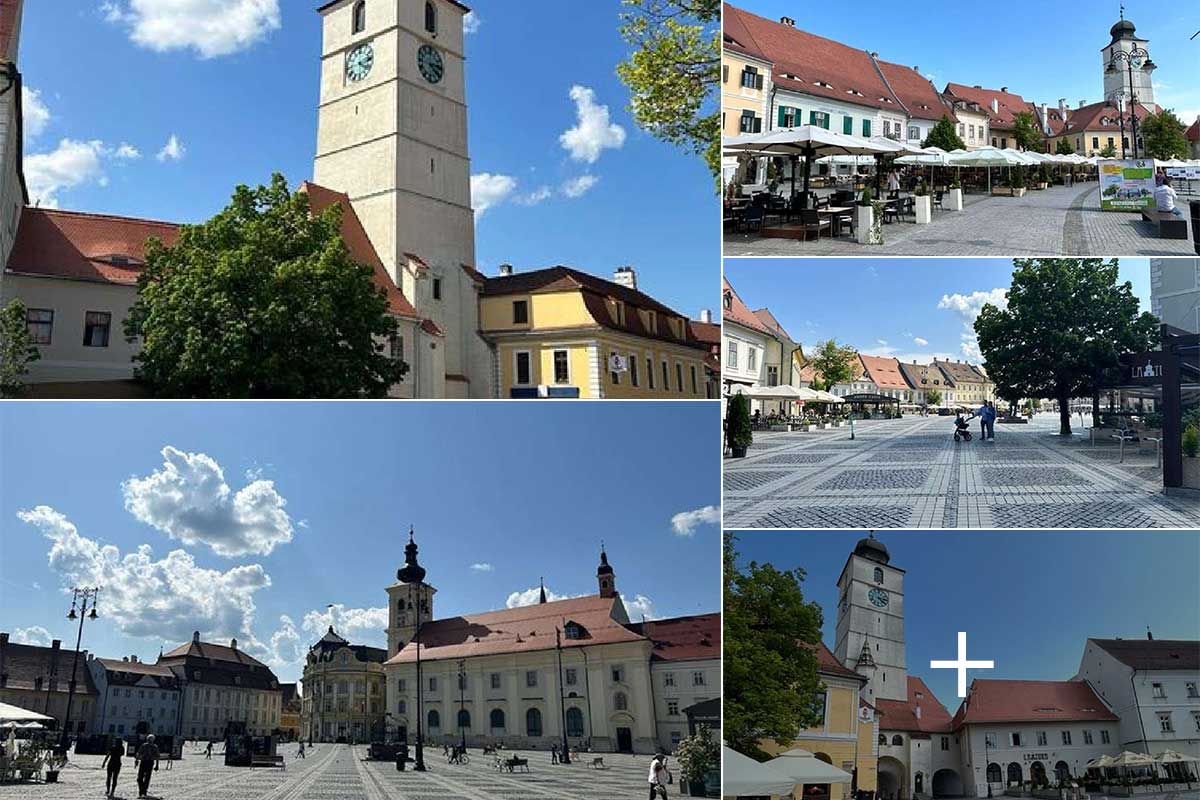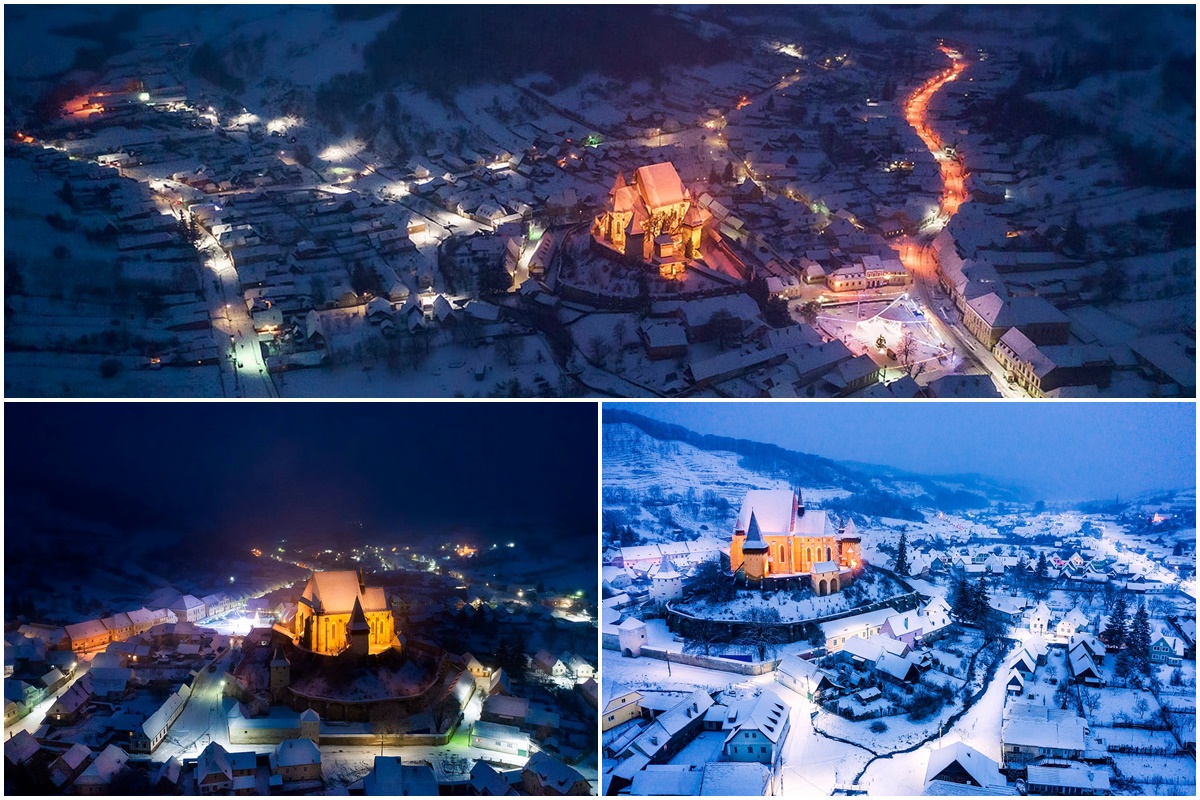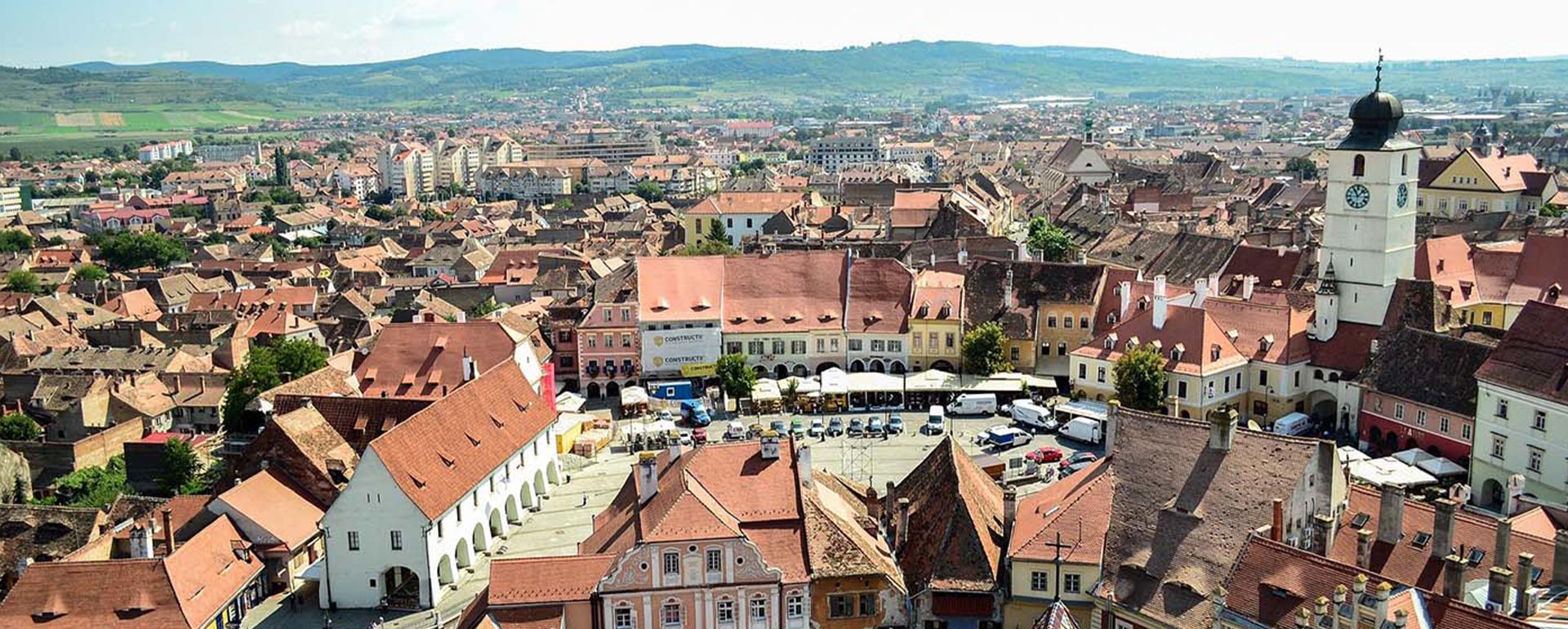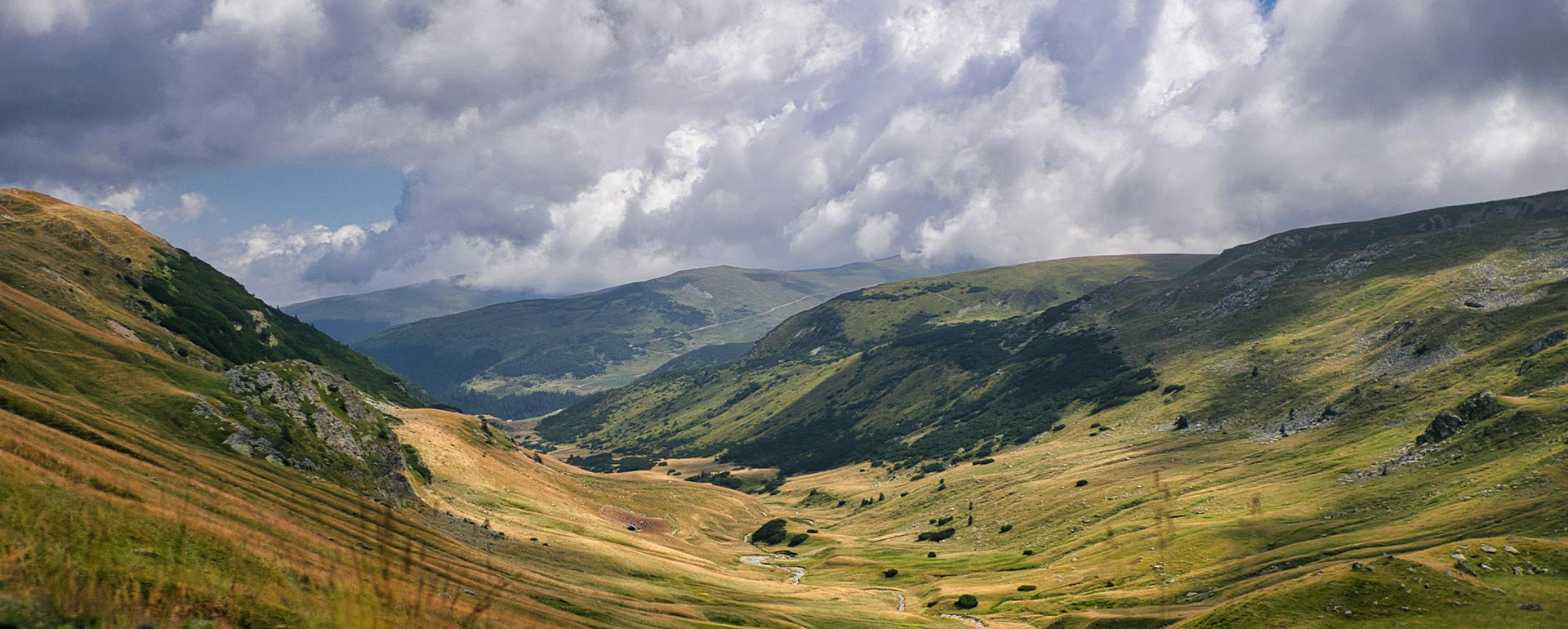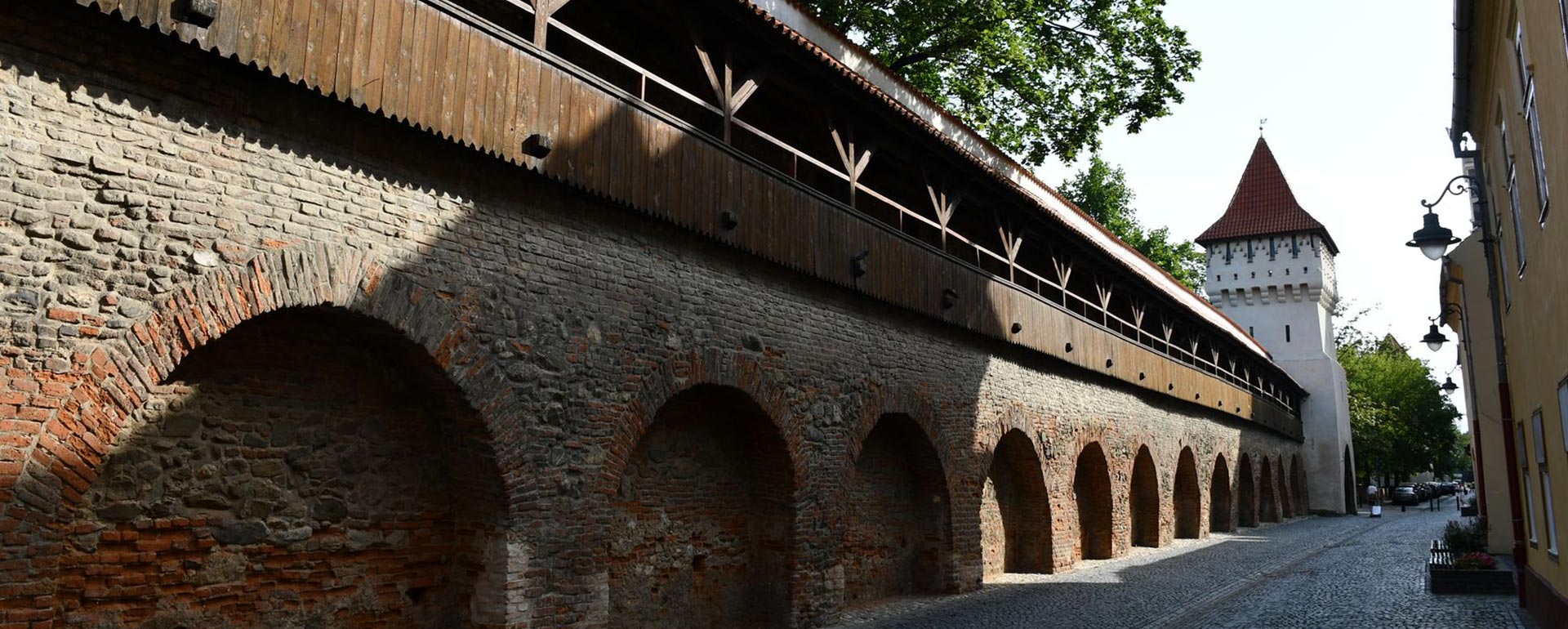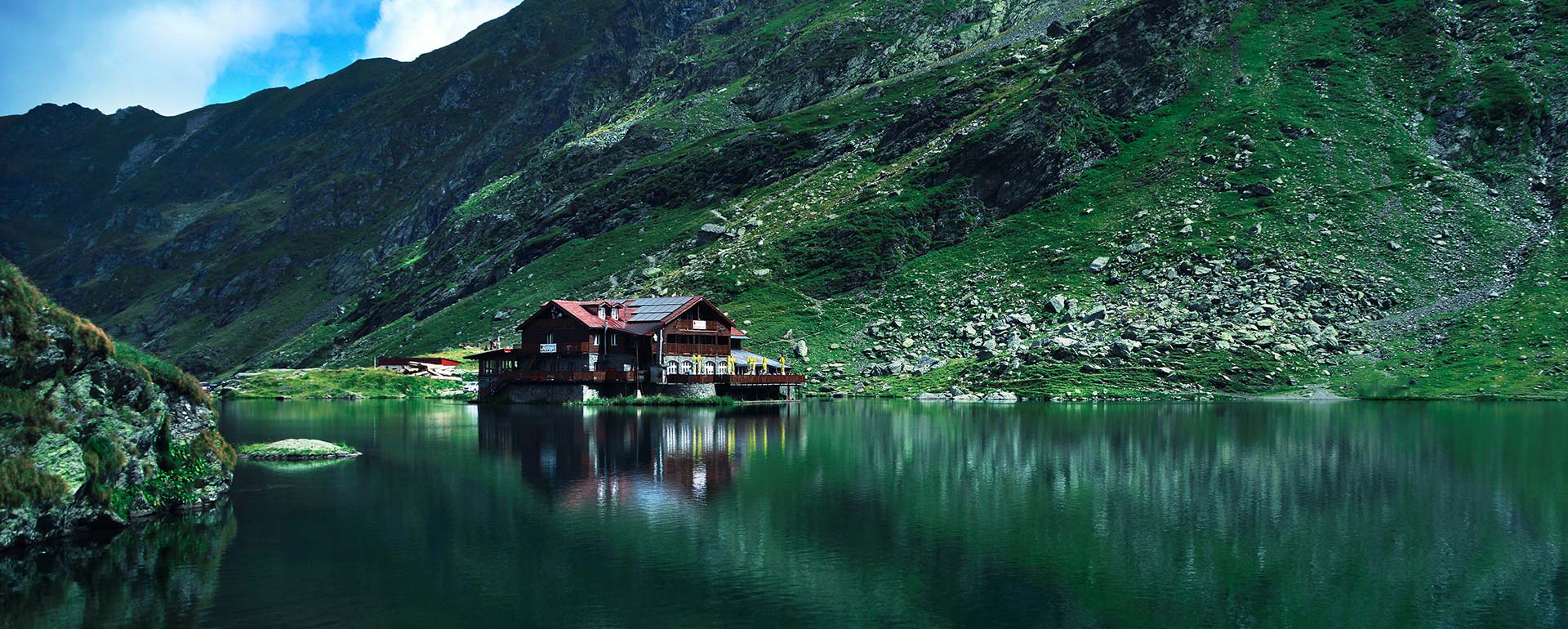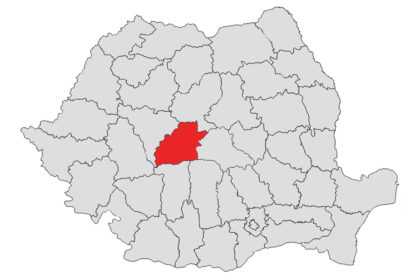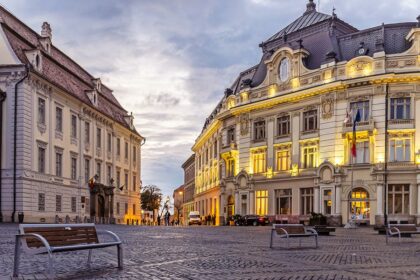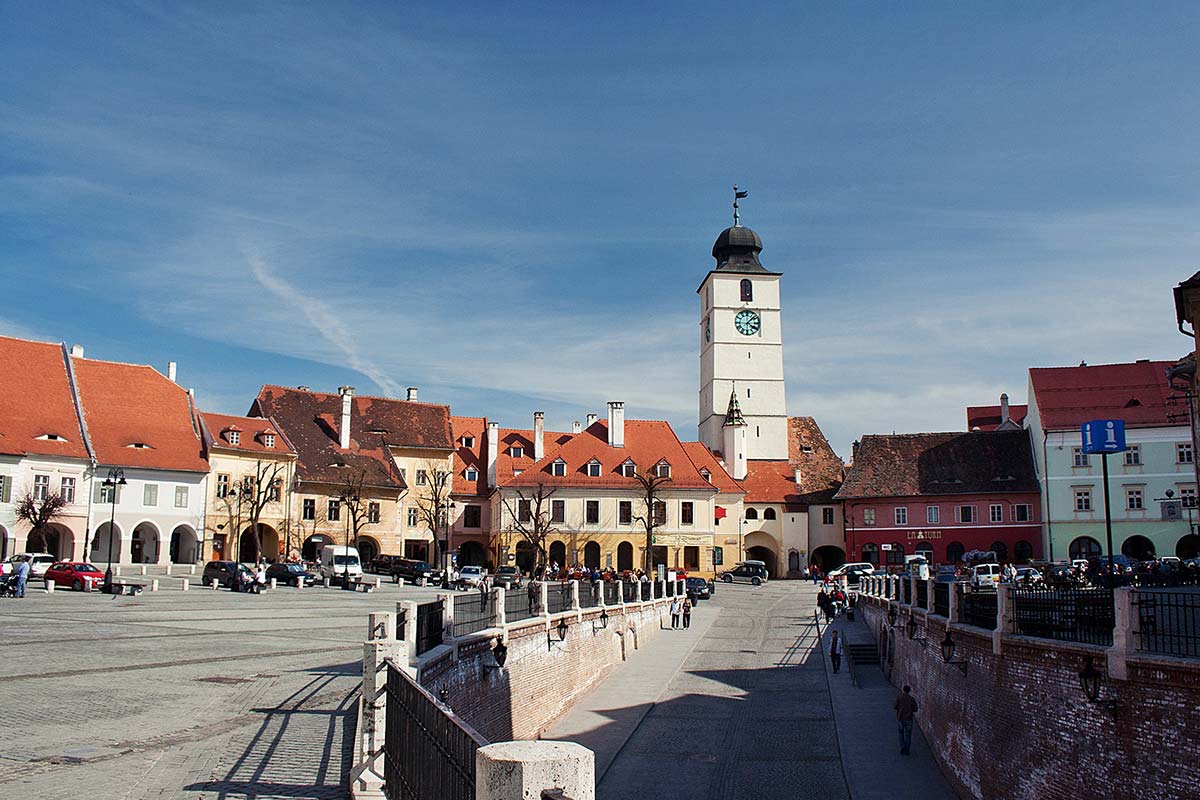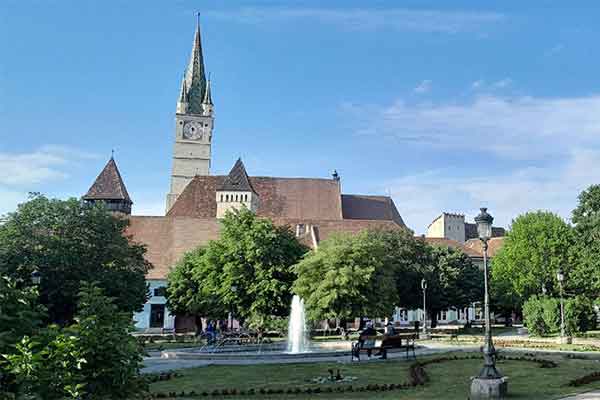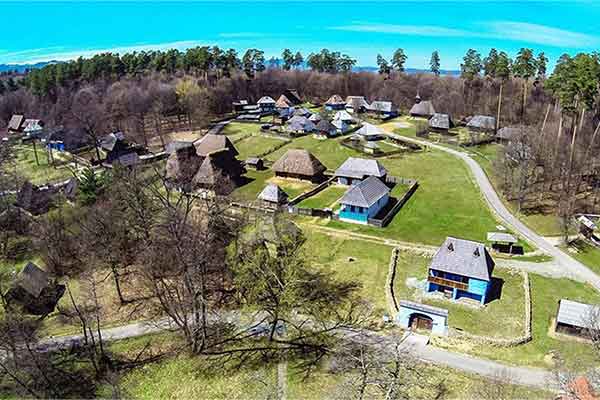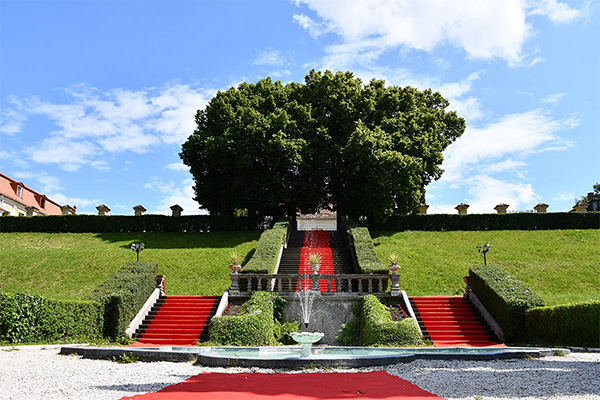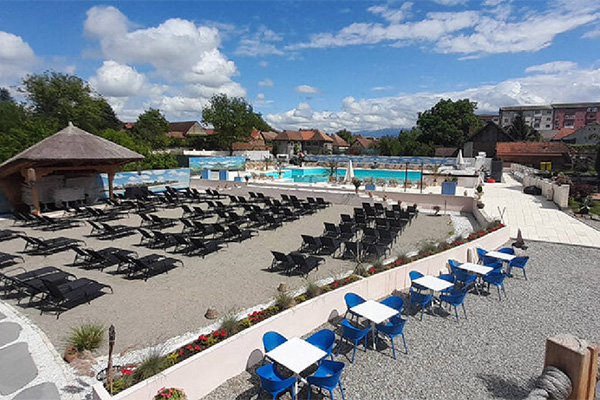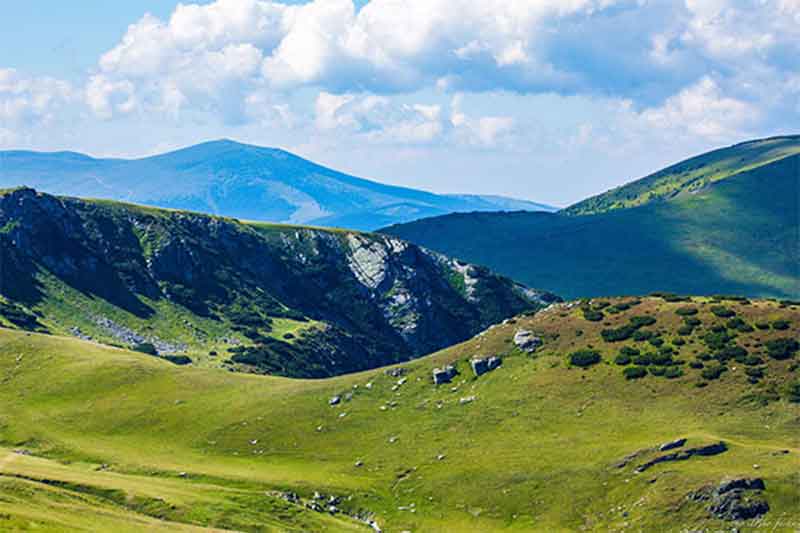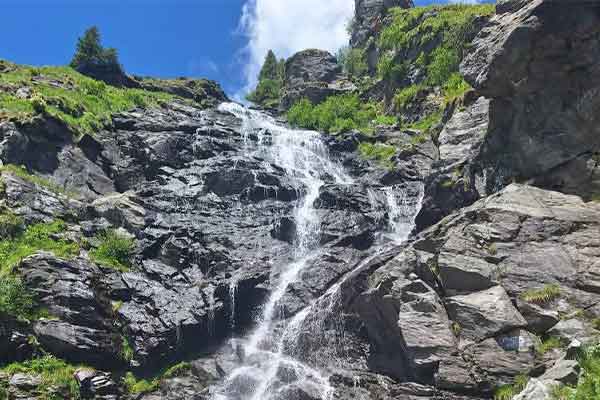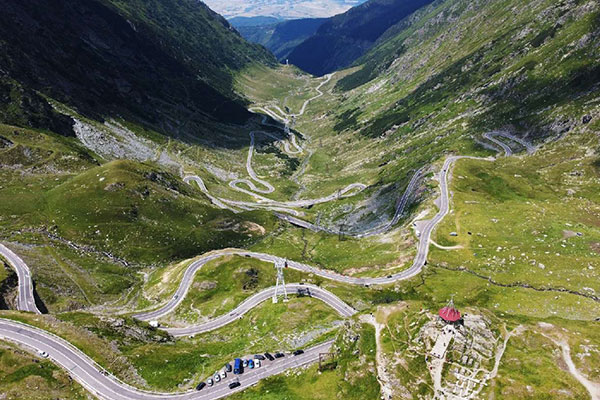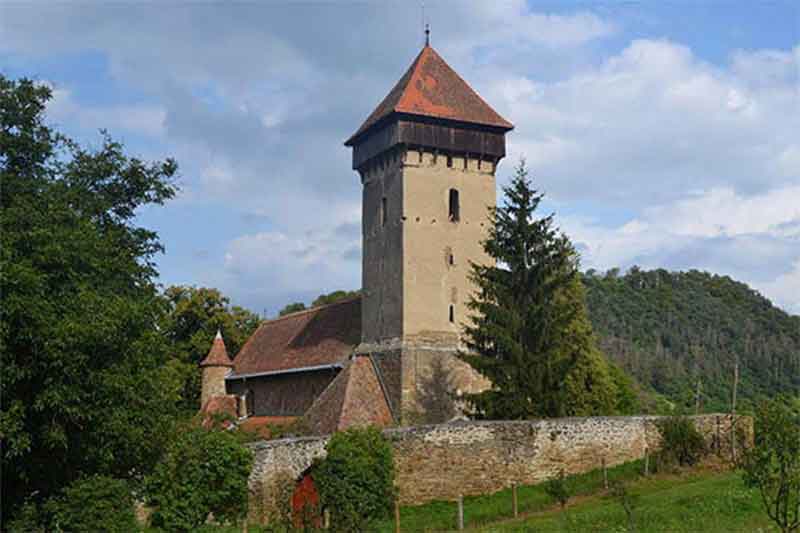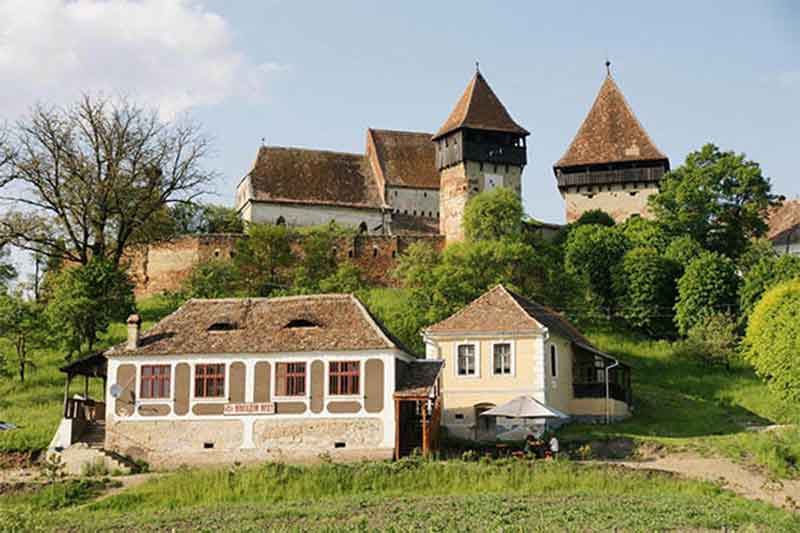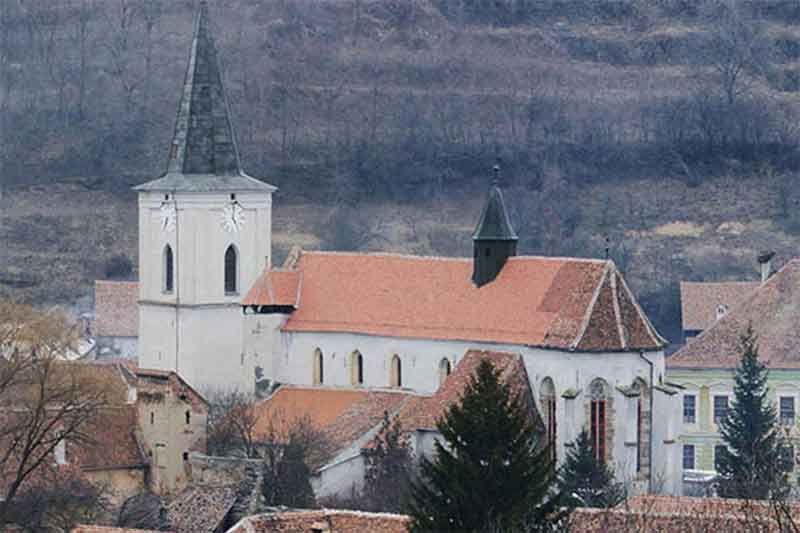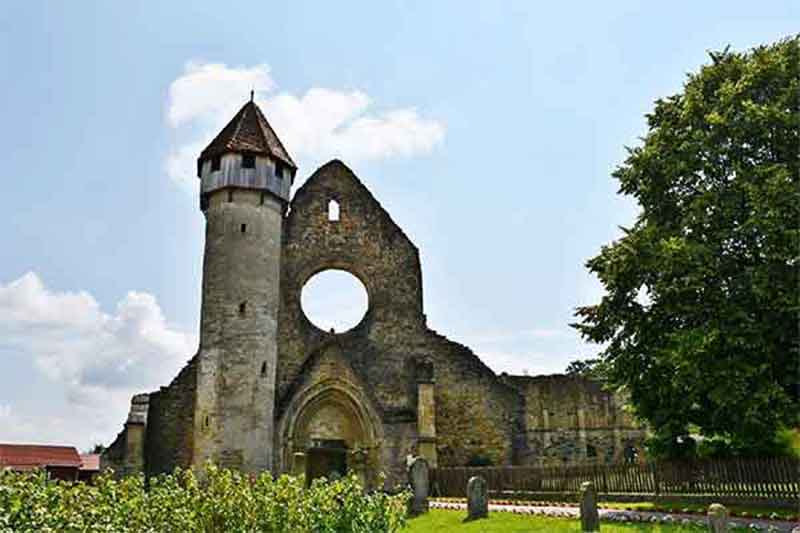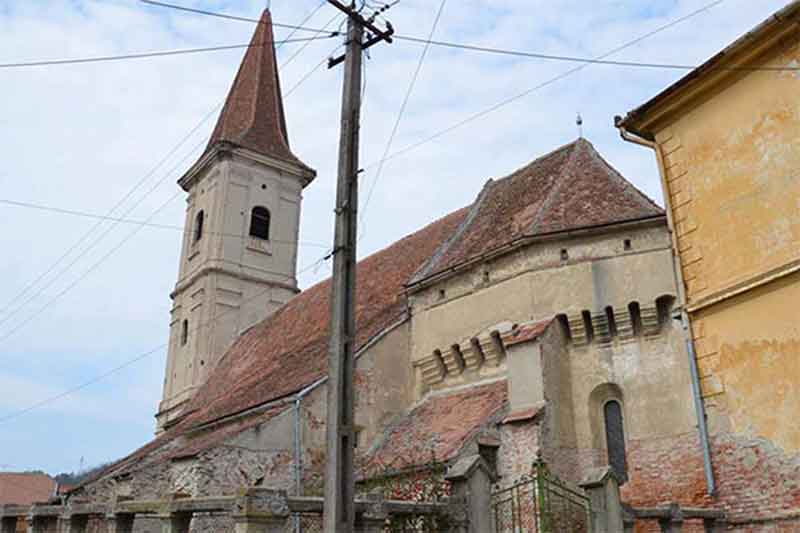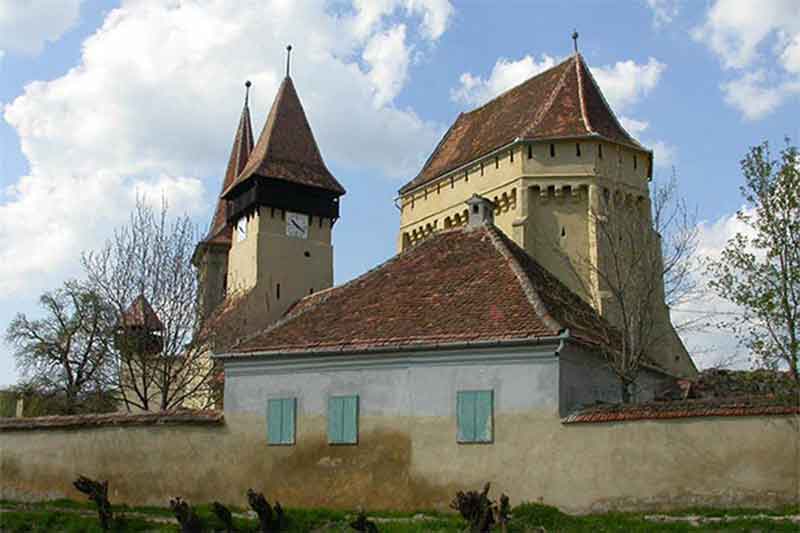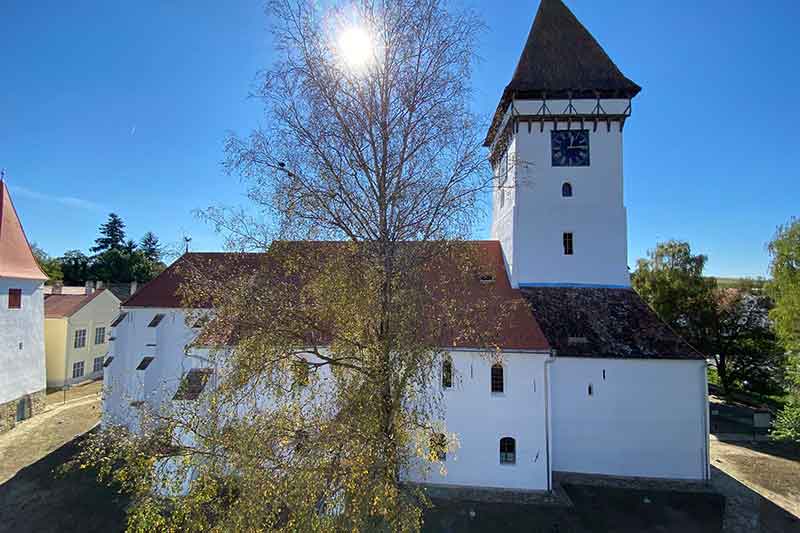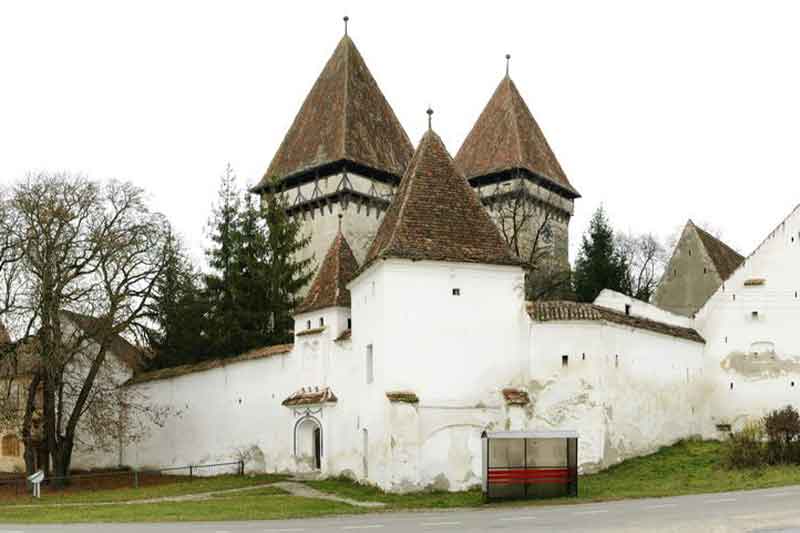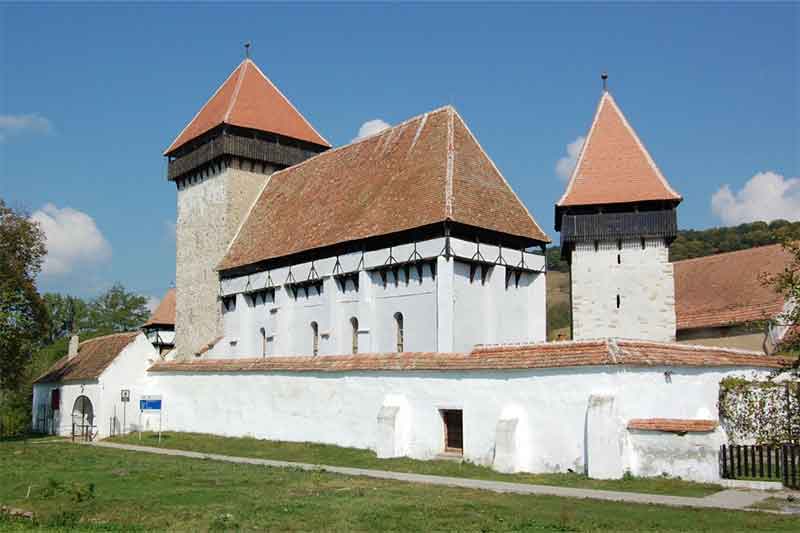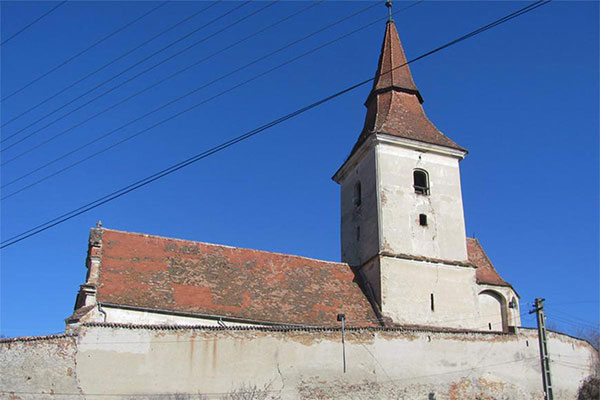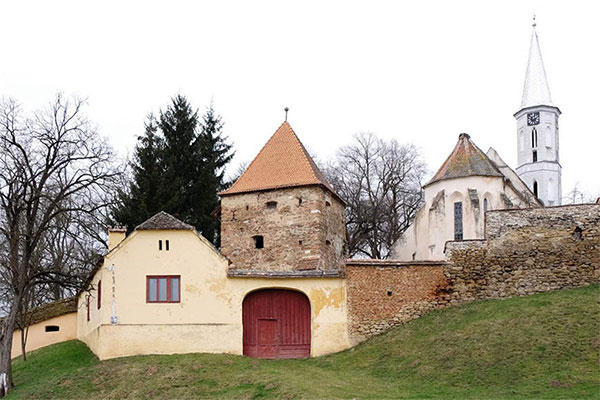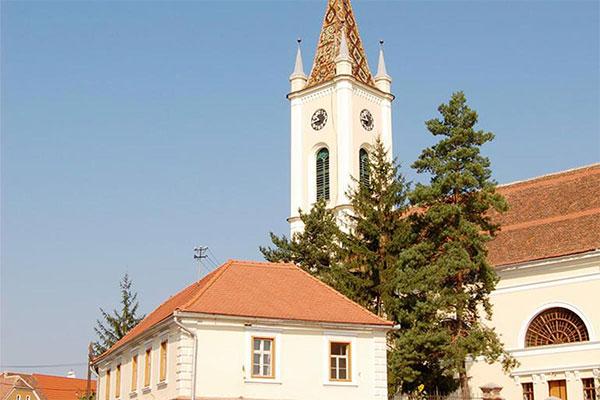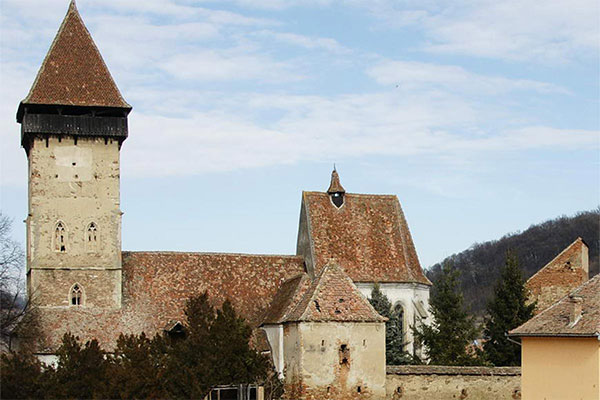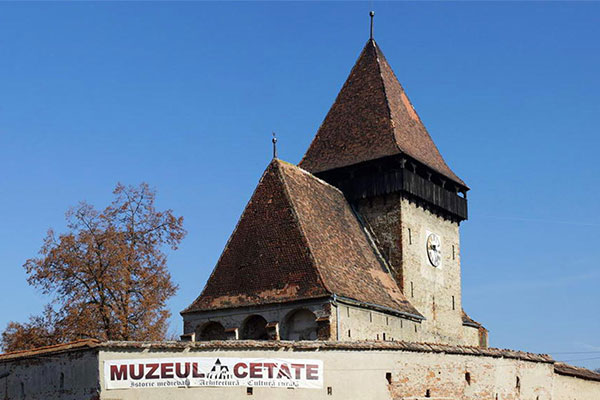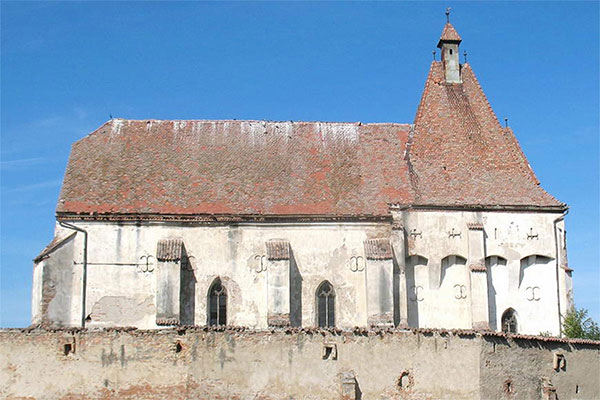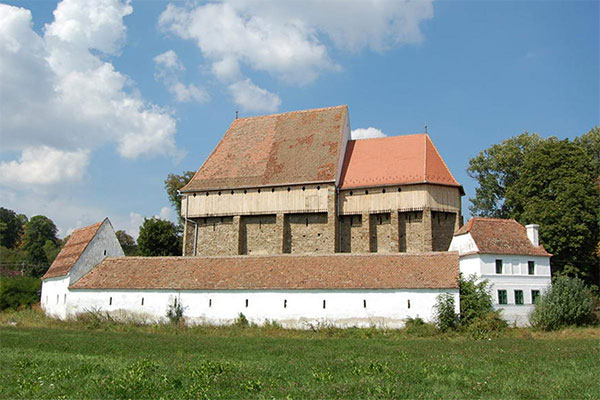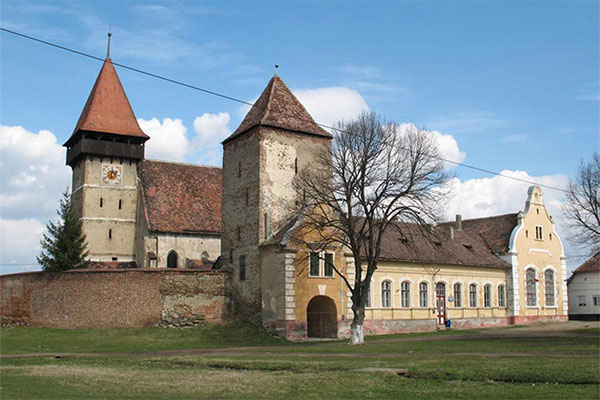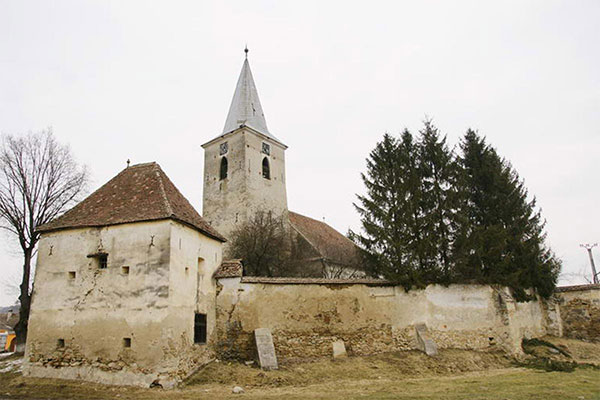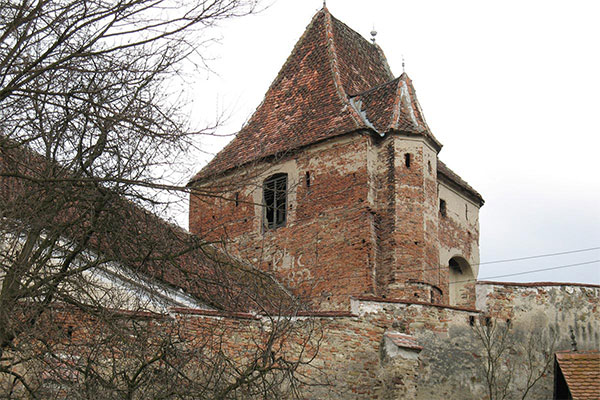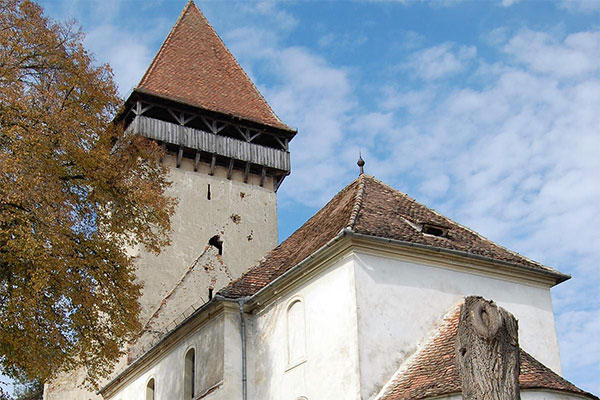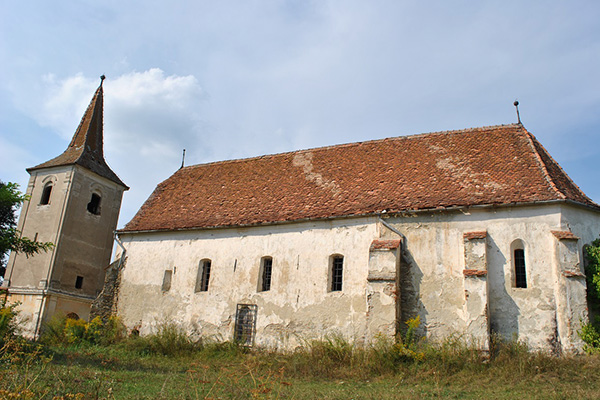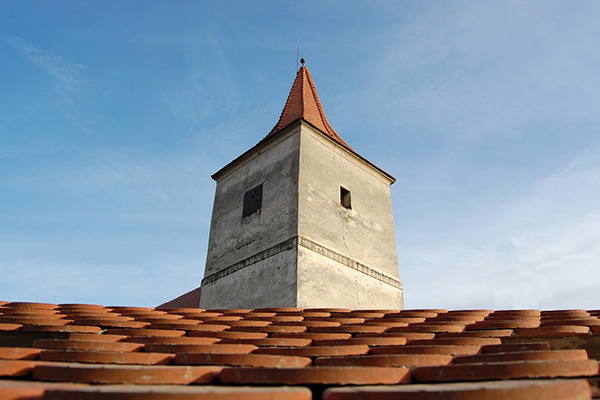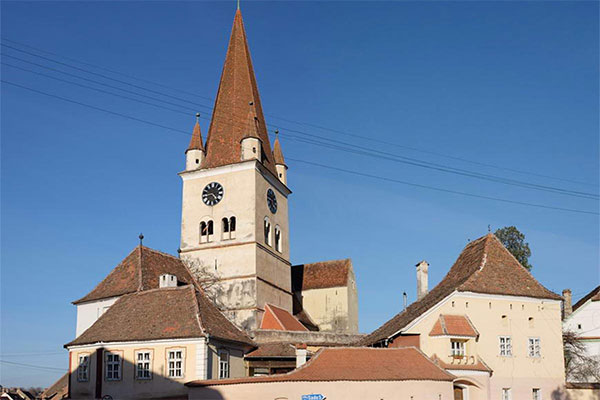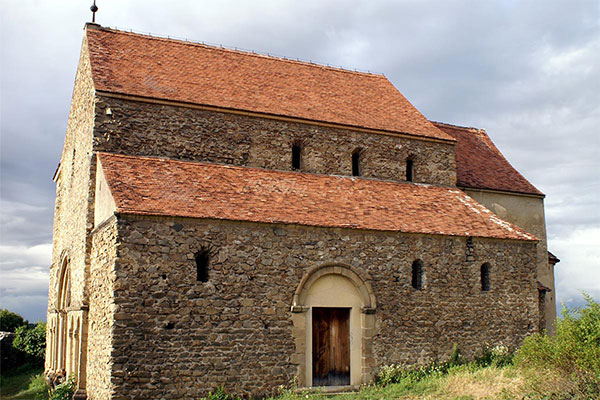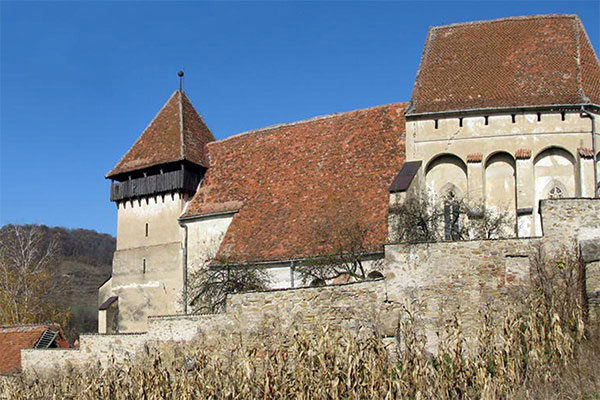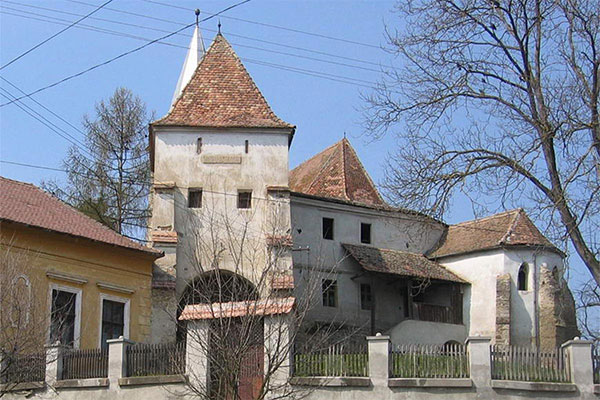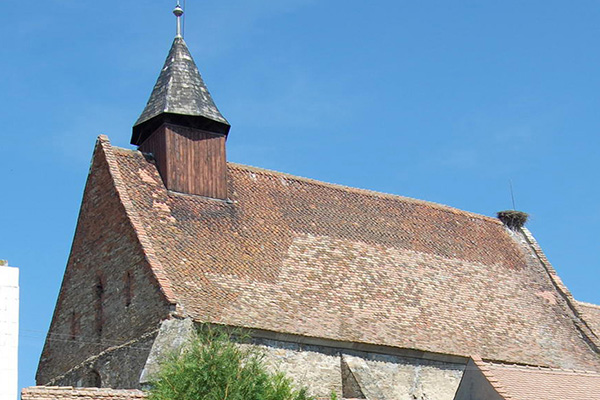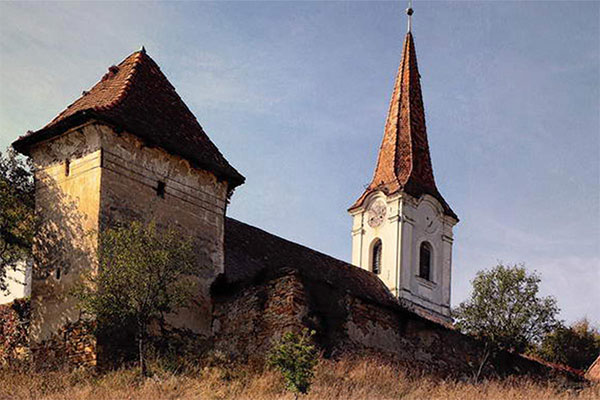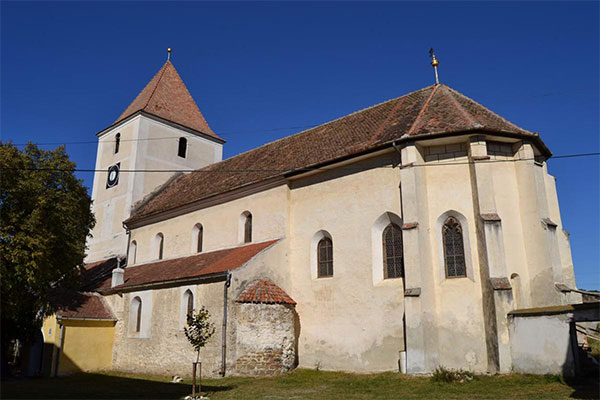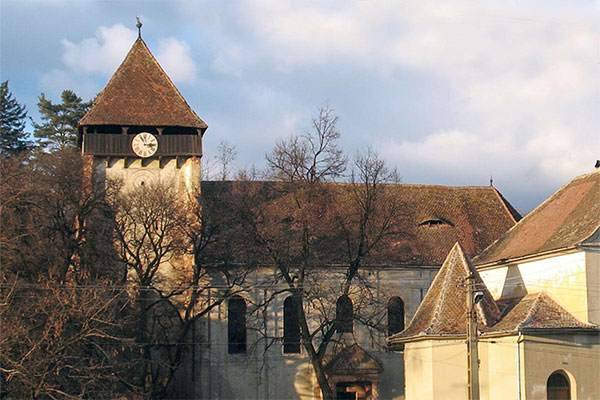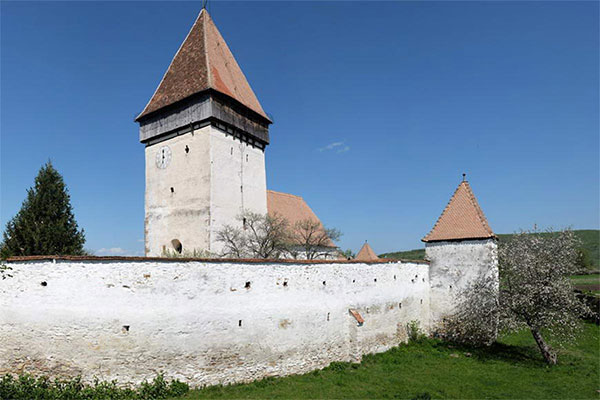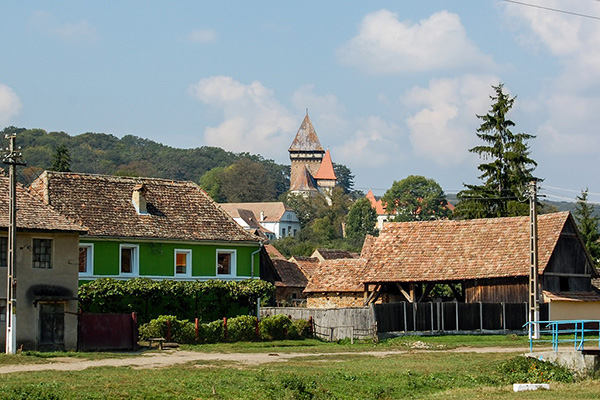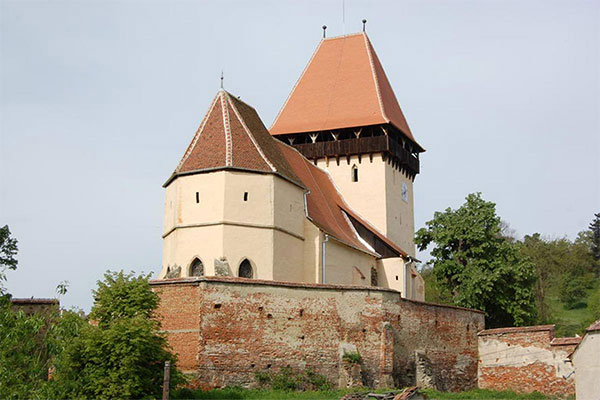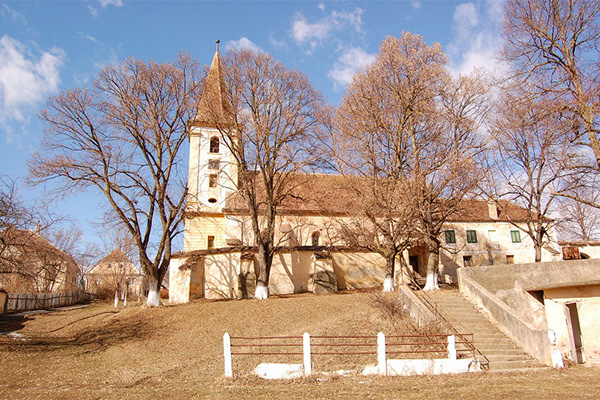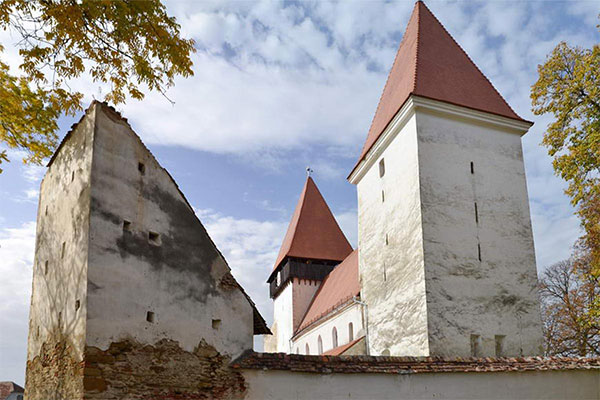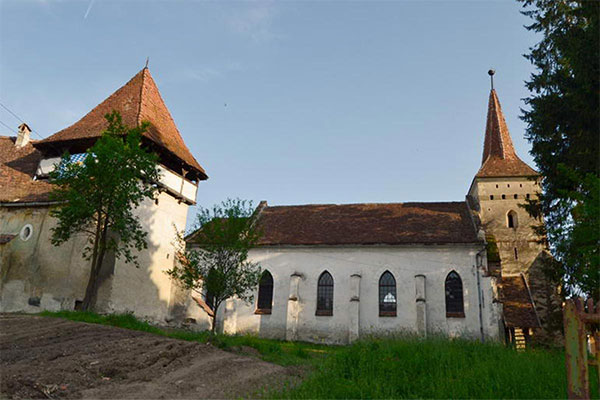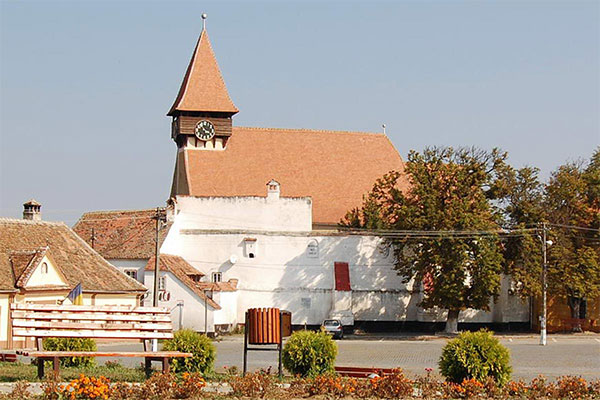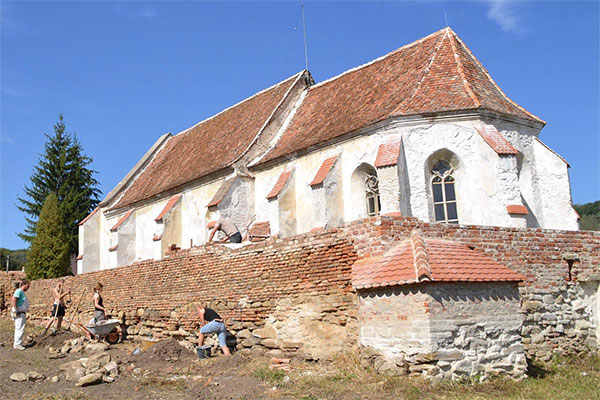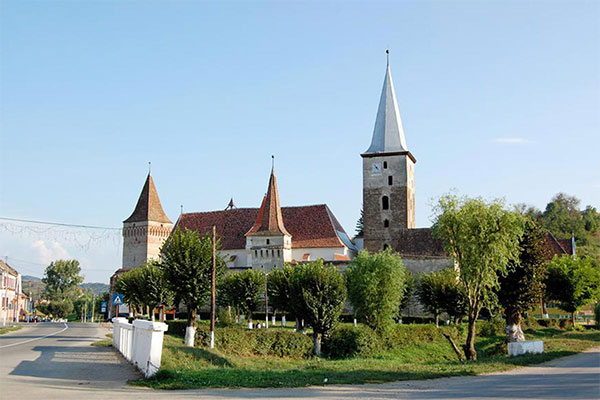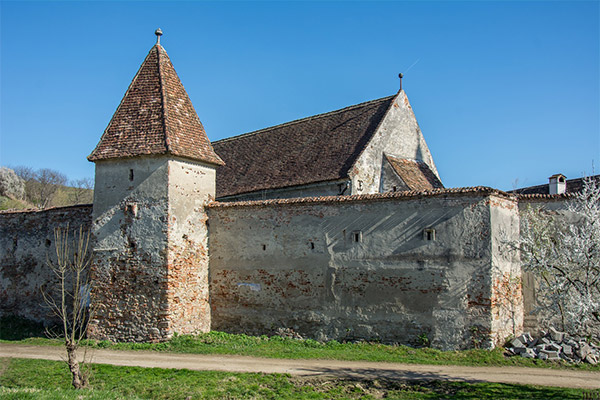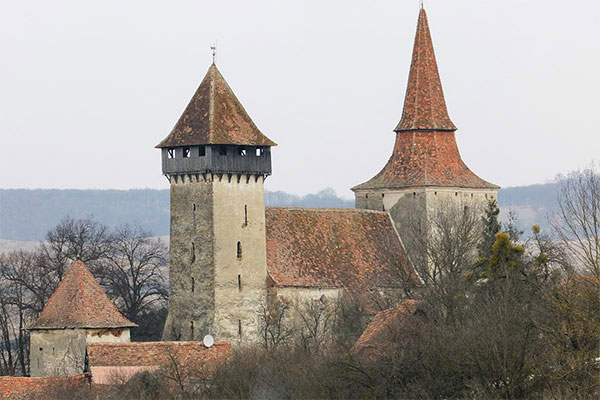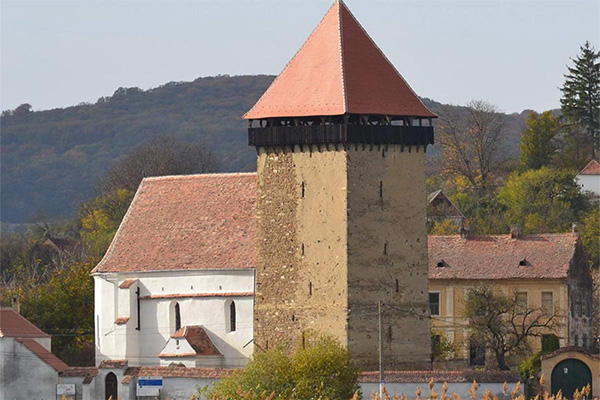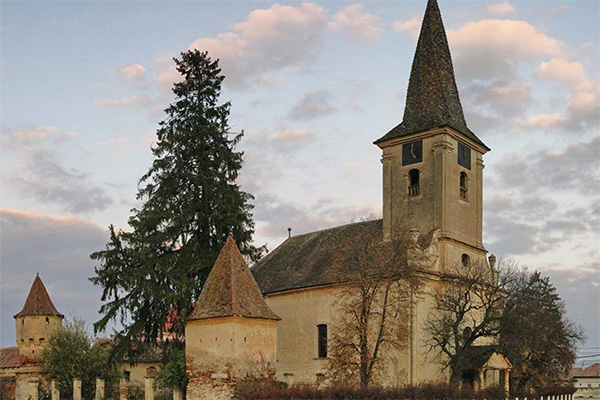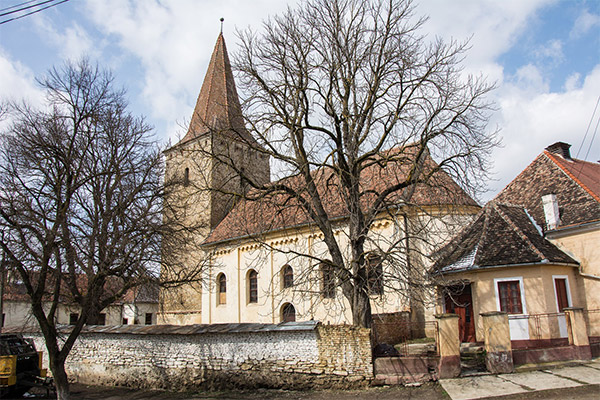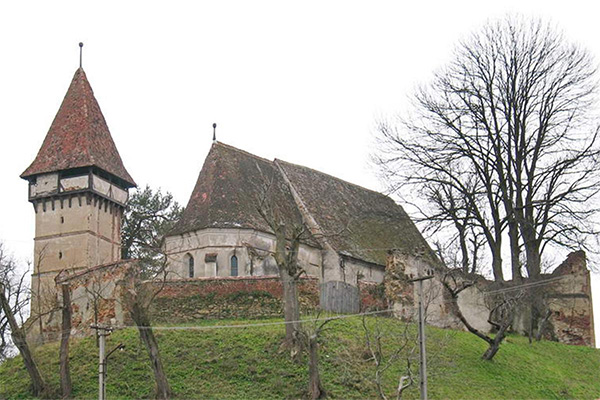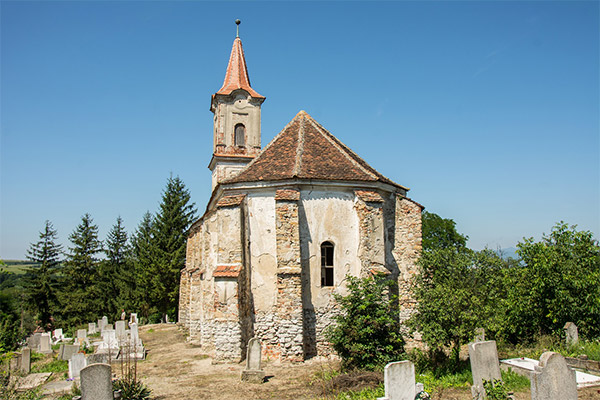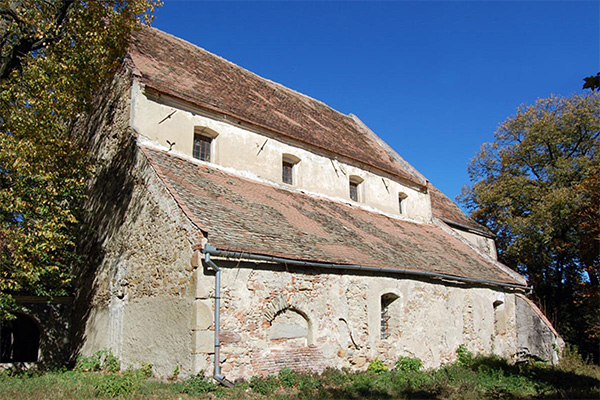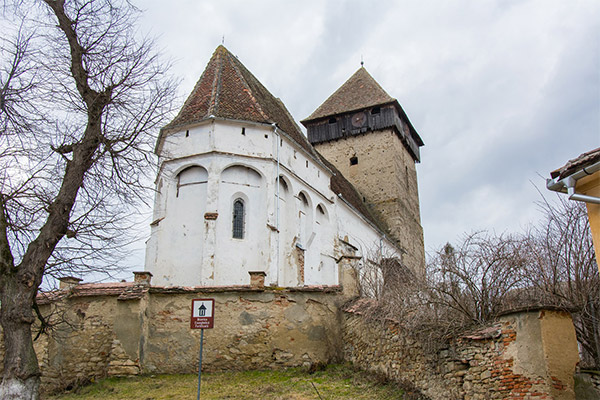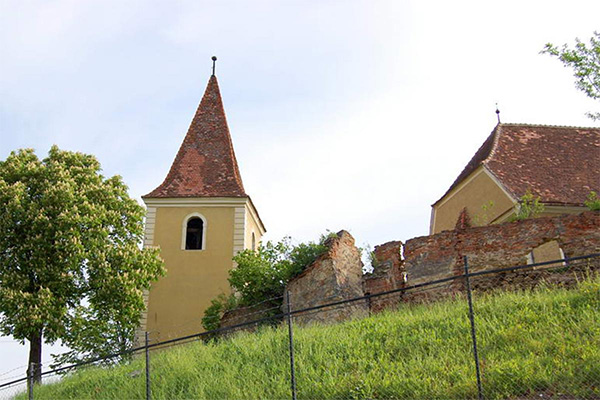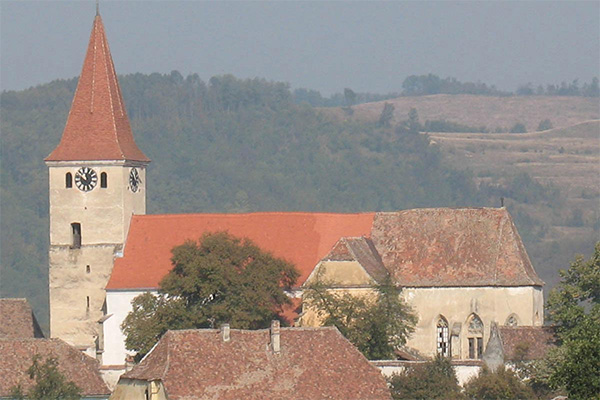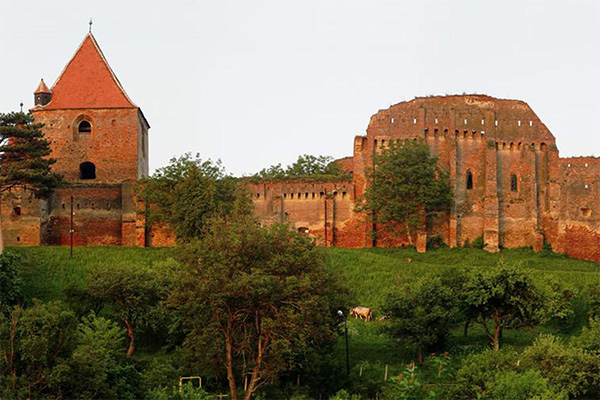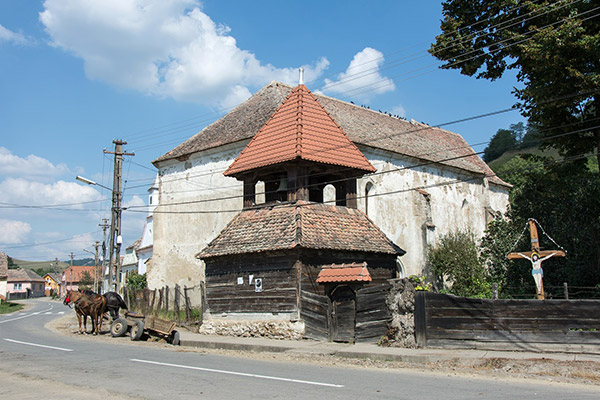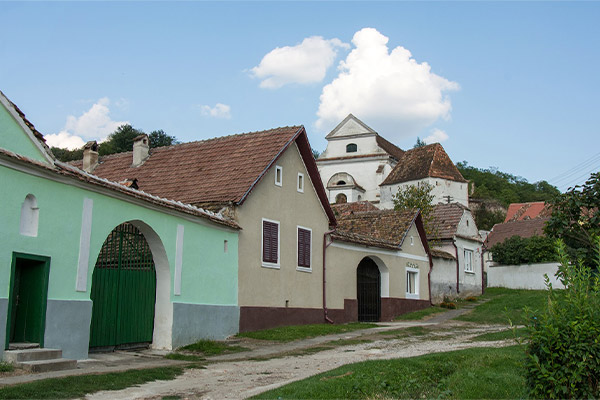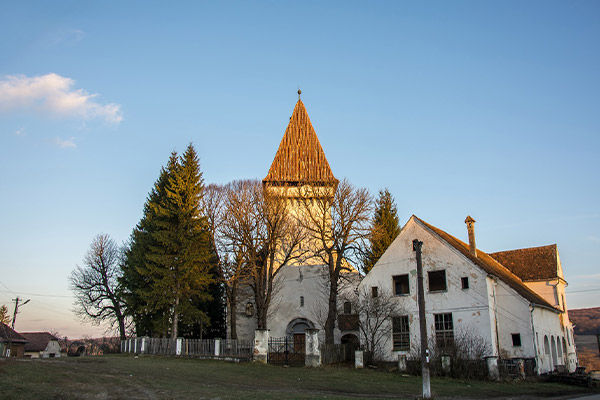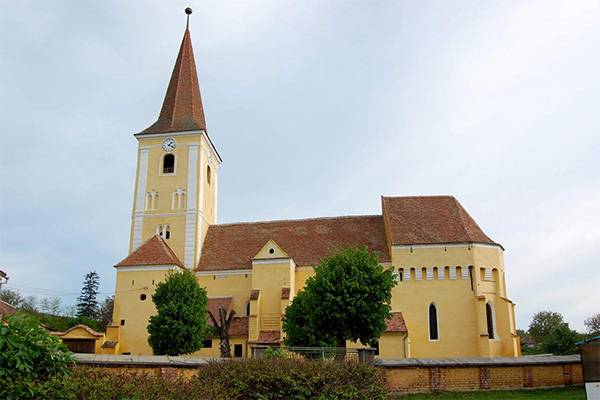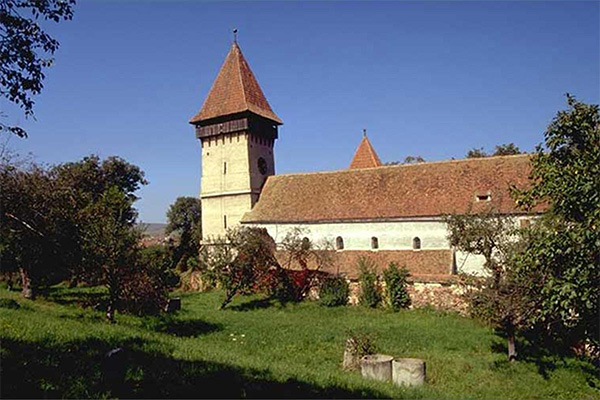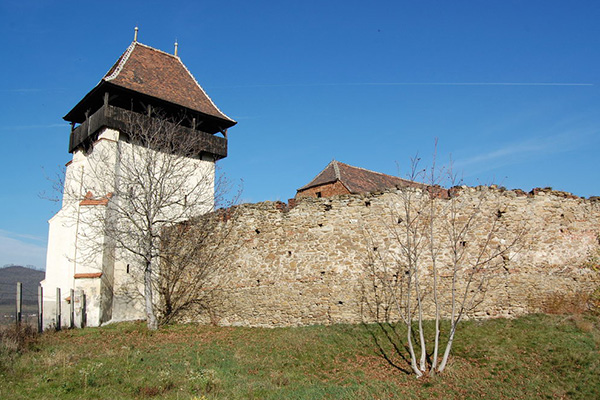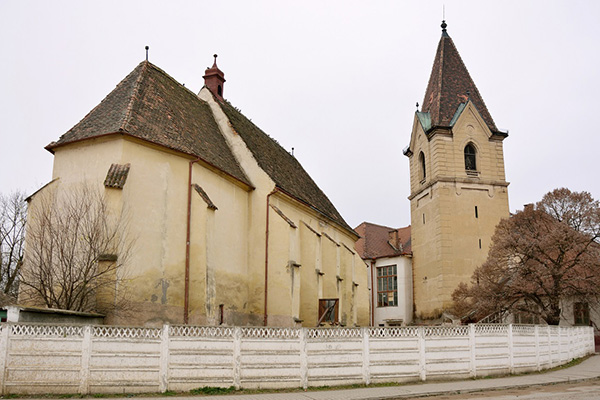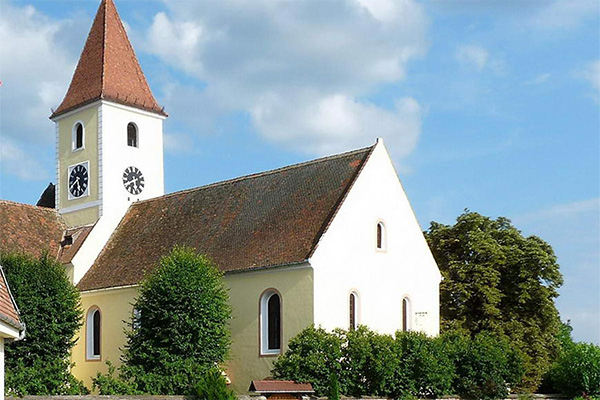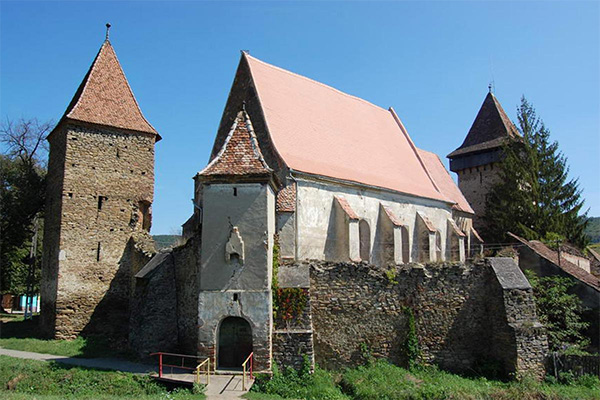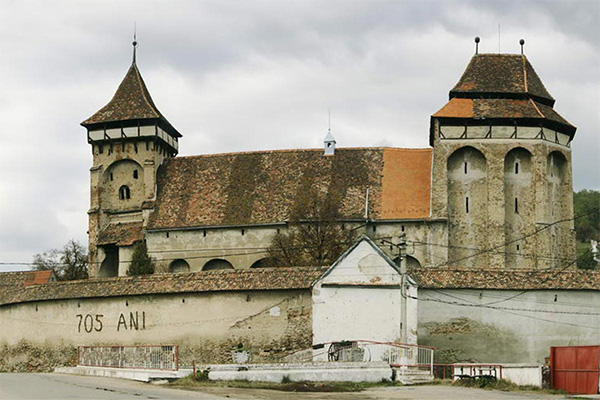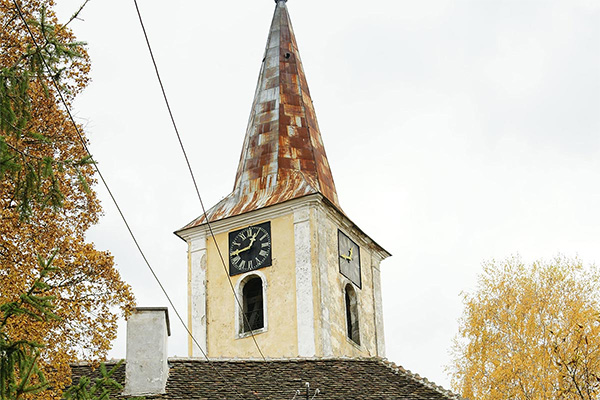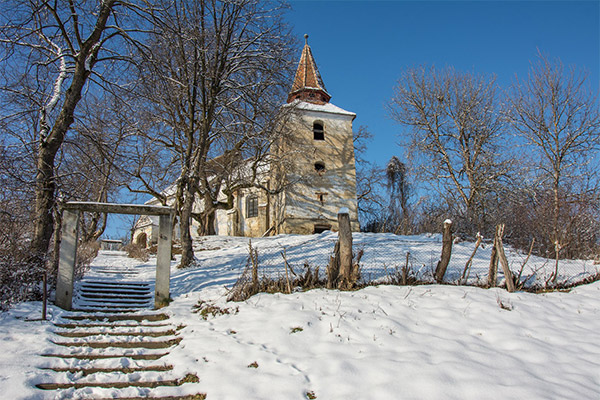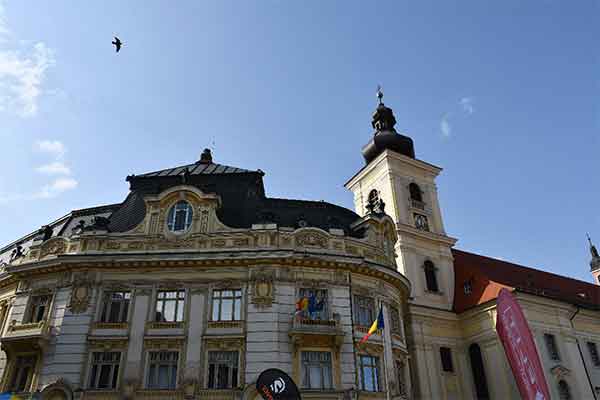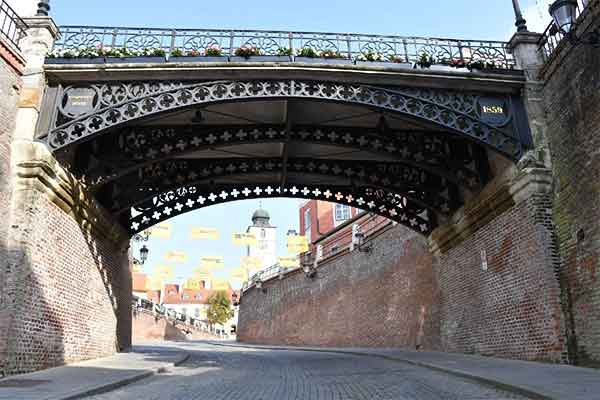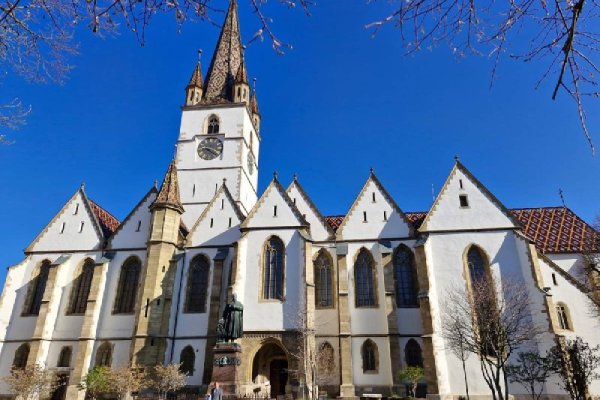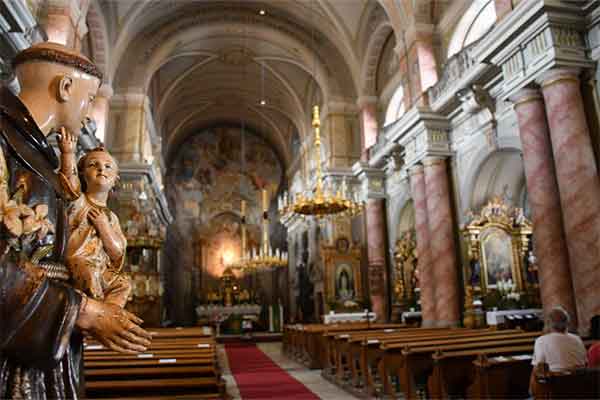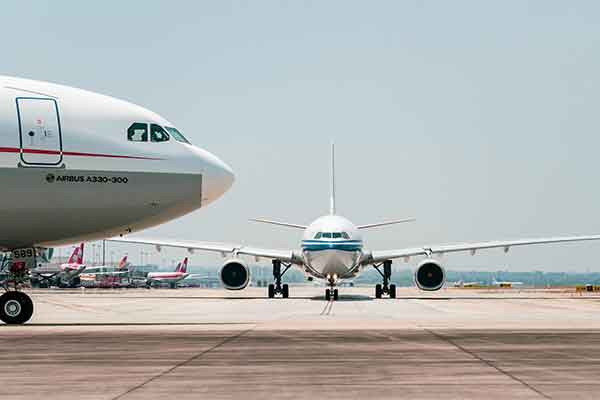Sibiu County (Cities: Sibiu, Medias, Cisnadie)
Sibiu is a Romanian county with the district city of Hermannstadt (Romanian Sibiu) in the Centru (centre) planning region. Historically, it belongs to the region of Transylvania. The registration number and common abbreviation for the circle is SB. Sibiu county borders Mureș county in the north, Brașov county in the east, Argeș and Vâlcea counties in the south and Alba county in the west.
Tourist attractions / Excursion destinations and Recommendations / Activities
Medias | Sibiu County
[More about] [Map]
Mediaș is a medieval town in the heart of Transylvania with a peaceful and charming atmosphere. The fortified church and other Gothic and Baroque buildings attracts numerous visitors. Surrounded by picturesque landscapes, Mediaș is an enchanting town.
Museum of Traditional Popular Civilization | Sibiu County
[More about] [Map]
Just 4 kilometres from Sibiu, in the Dumbrava Sibiului Nature Reserve, lies the ASTRA Museum of Traditional Civilisation, Europe’s largest open-air ethnographic exhibition. Covering an area of 96 hectares, this open-air museum is an ideal place for preserving the authentic Romanian spirit – a living museum that hosts numerous traditional events: festivals, fairs, craft workshops and much more
Palace Brukenthal | Avrig | Sibiu County
[More about] [Map]
In the south of Transylvania, you will find the perfect place to spend your holiday or escape everyday life for a while. In the middle of the baroque park of Samuel von Brukenthal’s summer residence in Freck (Avrig), modern guest rooms and VIP rooms have been furnished for you, as well as a flat in the orangery.
Beach Club Avrig / Corabia Piratilor | Sibiu County
[More about] [Map]
Summer | Sun and Pirate Ship / Beach Club Avrig / Freck. Bathing fun close to Sibiu / Hermannstadt in Transylvania. The new leisure and entertainment offer completes the offer of Brukenthal Palace in Avrig – sunbathing and pirate ship relaxation areas are waiting for you to spend even more fun at our location! Beach Club Avrig (Pirate Ship) opposite Brukenthal Palace in Avrig is the perfect solution for the hot summer.
Transalpina (DN67C) | Sibiu County
[More about] [Map]
The Transalpina, also known as Drum național 67C (Romanian for national road), is an important tourist road in Romania. It crosses part of the Carpathian Mountains (also known as the Transylvanian Alps) and connects Gorj County in Little Wallachia with Alba Iulia County in Transylvania. The Transalpina reaches an altitude of up to 2,140 metres.
Balea waterfall | Sibiu County
[More about] [Map]
The Bâlea Waterfall, also known as ‘Urlătoarea Bâlei’, is located in the Făgăraș Mountains, between the peaks of Moldoveanu and Negoiu, at an altitude of over 1,200 metres. At this remarkable location, the road passes directly by the waterfall and is a magical route that connects the historic regions of Wallachia and Transylvania in a spectacular mountain landscape.
Fagaras Mountains | Sibiu County
[More about] [Map]
The Făgăraș Mountains are located in the Southern Carpathian mountain range in Romania. The ridge is about 70 km long and 40 km wide. The mountain range covers an area of almost 2,000 square kilometers and rises with Mount Moldoveanu (west of Brașov) at an altitude of 2,544 meters.
Balea Lake | Sibiu County
[More about] [Map]
Bâlea Lake is 360 m long, 46,508 m2 in surface and 11.35 m deep, formed in the Bâlea Glacial Caldera in the Făgăraș Mountains and is located at elevation 2034 on the Transfăgărășan road. 1993 is the year in which the lake and 180 hectares around it are declared a nature reserve.
Transfagarasan | Sibiu County
[More about] [Map]
A magical road… this is the road among the mountains of Făgăraş, which starts from the town of Bascov, Argeş county, and ends near the town of Cârțișoara, Sibiu county. You are simply breathless, speechless and deeply impressed by this whole enclosure. It seems unreal so much beauty and certainly any moment spent in this area enters your soul, leaving your mind full of wonderful memories.
Biertan Fortified Church | Sibiu County
[More about] [Map]
Biertan, one of the largest and most important Saxon fortified churches, impresses with the complexity of its defensive system. Built between the 14th and 16th centuries, it was the residence of the evangelical bishop and includes towers, double walls, and refuge rooms, symbolizing power and faith in Transylvania.
Malancrav Fortified Church | Sibiu County
[More about] [Map]
The late Gothic fortified church of Saschiz was built at the end of the 15th century and is part of the UNESCO World Heritage. It impresses with its massive defensive tower, a Baroque altar from Vienna, an organ from 1788, and fine wood carvings – a remarkable testament to Saxon craftsmanship.
Alma Vii Fortified Church | Sibiu County
[More about] [Map]
The fortified church of Alma Vii was expanded in the 16th century into a defensive complex with thick walls, striking guard towers, and an inhabitable bell tower perched on a ridge above the village. The combination of Gothic style and defensive features makes it a remarkable example of Saxon military architecture in the Sibiu region.
Richis Fortified Church | Sibiu County
[More about] [Map]
The fortified church of Richiș was built in the 14th century and is surrounded by mighty protective walls with two defensive towers. The basilica impresses with intricate carvings, richly decorated altar furnishings, and symbolic details. The most important construction phase was documented in 1451, while fortifications were added around 1500. The fortified church is an outstanding testament to medieval architecture and religious culture in the Mediaș region.
Carta Cistercian Monastery | Sibiu County
[More about] [Map]
Founded in the 13th century, the Cârța Cistercian Monastery is a landmark of Gothic art in Romania. Its ruins still retain the charm of the past and evoke monastic life dedicated to prayer and work. Located in a picturesque natural setting, the monastery symbolizes medieval Christian history.
Seica Mare Fortified Church | Sibiu County
[More about] [Map]
Built in the 13th century, the fortified church of Șeica Mare impresses with its powerful walls and well-preserved towers. Inside, original furnishings and valuable decorations give the structure significant cultural value.
Seica Mica Fortified Church | Sibiu County
[More about] [Map]
The Gothic fortified church of Șeica Mică dates from the 14th century and features a sophisticated defense system. It served the Saxon community as a place of refuge. The interior still holds precious original elements and tells the story of a resilient and deeply faithful community.
Agnita Fortified Church | Sibiu County
[More about] [Map]
The fortified church of Agnita was originally built in the 13th century as a basilica and gradually expanded into an impressive fortified complex. In the 15th and 16th centuries, it was equipped with loopholes, towers, and a defensive choir. Thanks to its Gothic architecture and winged altar, it is a popular destination for culture enthusiasts and families.
Dealu Frumos Fortified Church | Sibiu County
[More about] [Map]
The fortified church of Dealu Frumos (Schönberg) was built in the 13th century and expanded continuously over the centuries. This impressive structure combines sacred architecture with the characteristic defensive elements of the region. Built by the Saxon community, it offered the population secure refuge during enemy attacks. The interior preserves valuable original furnishings and paintings.
Stejarisu Fortified Church | Sibiu County
[More about] [Map]
The fortified church in Stejărișu (Probstdorf) was built in the 14th century as a hall church and expanded in the 15th century into a Gothic fortified complex. It is notable for its sturdy walls and defensive towers, including the characteristic “bacon tower” (Speckturm). The site served as a refuge for villagers during times of war and today stands as a significant testament to the Saxon traditions of Transylvania.
Agarbiciu Fortified Church | Sibiu County
[More about] [Map]
In the early 14th Century an early Gothic basilica was built in the middle of the village. The aisles were removed and the arcades were bricked up in 1500, when the church was fortified. Above the chancel a defence tower was erected. The chancel’s polygonal closure was heightened with two defence levels and the buttresses were connected by arches, in order to build a machicoulis gallery behind them.
Altana Fortified Church | Sibiu County
[More about] [Map]
The fortified church stands on a hill northwest of the village. In the center of the village, a Romanesque basilica with five bays and a choir loft was built in the 13th century. The square columns have profiled bases and capitals. The nave received a late Gothic reticulated vault in the 15th century.
Apoldu de Sus Fortified Church | Sibiu County
[More about] [Map]
The fortified church in Apoldu de Sus was erected after the demolition of the old Romanesque basilica preceding it. A church hall was built in 1836 and completed with a tower in 1867. The interior is a nice example of a neoclassical church, where the altar from 1751 and the organ from 1816 are still preserved, both of them originating from the old basilica.
Atel Fortified Church | Sibiu County
[More about] [Map]
The village belonging to the Mediaş Chapter was mentioned once as a town in the 15th century the 14th century. The king granted the place the right to hold fairs and weekly markets. The Comites of the noble house Tobiassy of Aţel played an important role in the 15th and the early 16th century Transylvanian history.
Axente Sever Fortified Church | Sibiu County
[More about] [Map]
The present church was built in the 14th century in Gothic style. Perhaps there was already a church on the same site before that, which was demolished. It can be assumed that the tower is the oldest part of the present fortified church, as the hall and choir were built next to it, from both sides, which is very rare in Transylvania. Nowadays, the church is in very good condition, and definitely worth a visit.
Boian Fortified Church | Sibiu County
[More about] [Map]
The subservient village was given to Moldavian Prince Stephen the Great at the end of the 15th century. The building of the first church occured around 1400. The hall church with a rectangular choir was built during the second construction phase at the beginning of the 16th century. The walls are buttressed; the high choir was towered and equipped with a star-ribbed vault.
Bradeni Fortified Church | Sibiu County
[More about] [Map]
The church was likely built in the early 14th century. The inside architecture is a mix of gothic and renaissance, which is quite rare in Transylvanian churchcastles. Also special is the secret underground tunnel (which can’t be visited anymore) and that there is no real transition between middleship and choir. There are many bible stories painted left and right of the benches. It was then fortified around 1500. In order to be able to survive a siege, there were large amounts of grain and other kinds of food stored beneath the roof. There are still over 250 chests remaining there.
Brateiu Fortified Church | Sibiu County
[More about] [Map]
The church-fortress lies in the centre of the village at the northern end of the green. The Early-Gothic basilica dedicated to Saint Mary Magdalene was built in the 14th century. The choir has a polygonal apse and a star-ribbed vault. The arcades between the nave and the south aisle were demolished and the south wall was raised, so that a church hall was formed. Three ogival arcades with their profiled pillars and capitals survived in the north. A Gothic font stands in the choir. The village experienced its heyday towards the end of the 18th century.
Bruiu Fortified Church | Sibiu County
[More about] [Map]
In the first half of the 13th century, a Romanesque basilica with a west tower was built and dedicated to Saint Nicholas. The ground floor of the bell tower had a western portal and three semicircular arches facing the side aisles and the nave. In the second construction phase, the side aisles were demolished and a late Gothic star-ribbed vault was erected on rectangular buttresses in the nave. The chancel arch was given a pointed arch.
Buzd Fortified Church | Sibiu County
[More about] [Map]
The late-gothic hall church stands in the centre of the village green. The choir with a 5/8 apse is oriented towards the south. The brick building with stepped buttresses has a groin vault with penetrations and a network of brick ribs; further up, stands a two-storey defence structure with loopholes. At present, the church is surrounded by an approximately 2m-high wall; there is a gate house with a wall-walk in the northern section of the wall. The plain inner decoration is dominated by the Baroque altar.
Chirpar Fortified Church | Sibiu County
[More about] [Map]
Similarly to other villages in the Region, a short three-aisled basilica with choir square, semi-circular apse and west tower was built there in the 13th century. The square choir of the Saint Mary’s Church is groined-vaulted and the Romanesque triumphal arch displays simple ledged arch imposts. There are also fragments of the Romanesque north and south portals. There are semicircular openings leading to all four sides of the bell-tower’s ground floor; a wall stairs leads to the second floor that displays a west gallery, which then via a roundheaded arch opens onto the church interior.
Apos Fortified Church | Sibiu County
[More about] [Map]
The hall church with polygonal choir was protected by a curtain wall in the Middle Ages. Still in the 16th century, further fortification works were carried out. Sustainable reconstructions took place in the 18th century: for example, the church received a tiled roof and new windows for the first time. Finally, in 1799, the separately standing bell tower was built under the direction of the master builder Michael Salzer from Biertan. The last remains of the medieval curtain wall were removed in 1913 in order to start the construction of the school building. The neo-Gothic altar, the baptismal font and the organ are 19th century works.
Avrig Fortified Church | Sibiu County
[More about] [Map]
In the 13th century, a Romanesque three-aisled pillar basilica dedicated to St. Catherine was built in Avrig. On the ground floor of the bell tower, which serves as a porch, there is a cross vault. On the remarkable west portal, remains of stone sculptures have been preserved, which remind us, for example, of Hosman.
Cisnadie Fortified Church | Sibiu County
[More about] [Map]
The construction of the Romanesque basilica dedicated to Saint Walpurga began in the second half of the 12th century. It has a massive west tower, which also defines the width of the nave (the part before the altar). The choir square with the apse (semicircular room intended for the altar) is essentially narrower than the nave. In the east, the aisles end in apsidioles (little apses).
Cisnadioara Fortified Church | Sibiu County
[More about] [Map]
During archaeological excavations, a coin from 1172 was found on the site of the mountain church of Cisnădioara, so it can be assumed that construction began in the last quarter of the 12th century. The three-nave Romanesque basilica, dedicated to St. Michael, stands on an elongated dome-shaped hilltop southeast of the village and was built within a perimeter wall.
Copsa Mare Fortified Church | Sibiu County
[More about] [Map]
The church was originally built in gothic architecture, and later in the 16th century, fortified to fit the defensive requirements at the time. The outer wall was also constructed during fortification of the church. Although much of the altar inside was crafted 19th century and later build in, there is still some reminisce of this late gothic altar in the city parish church in Sibiu. The organ is dated to the year of 1800.
Curciu Fortified Church | Sibiu County
[More about] [Map]
At the end of 14th century, the three-aisled Gothic basilica with west tower dedicated to Saint John was built on a hill in the centre of the village. The choir display chamfered and pear-shaped ribs that rest on engaged pillars with capitals. The sacrament alcove, keystones, a richly decorated sedile and traceried windows represent the valuable architectural sculpture. An oval enclosing wall surrounds the church. In the south stands a gate tower with portcullis grooves, next to it a chapel whose choir is placed before the curtain wall.
Darlos Fortified Church | Sibiu County
[More about] [Map]
The small aisle-less church without tower from the 15th century is almost entirely preserved. The chancel was rebuilt in 1500 and the ceiling of the nave dates back to a construction phase from the 19th century. Nothing from the initial defense wall has remained.
Gherdeal Fortified Church | Sibiu County
[More about] [Map]
The church in Gherdeal, a small, secluded village in the valley of the Rohrbach River, is still surrounded by a well preserved defence wall with towers in all four corners. The southern tower was transformed mid 19th century into a gatehouse and served as a home for the castle guardian. The initial medieval church in danger of collapse was completely demolished in 1850 and a new hall church with western tower was built in the contemporary style, as the simple composition of the tower’s facade and the interior furnishing testify.
Gusterita Fortified Church | Sibiu County
[More about] [Map]
A short Romanesque basilica with a west tower was built at the beginning of 13th century, of which only the square pillars, the cross vaults of the aisles, the southern apsidiole and fragments of the south and of the north portals are extant. The church was rebuilt in Gothic style at the end of 15th century. The east apse got a 5/8 termination in the upper part, the choir was covered with a brick-ribbed cross vault. Gothic lancet windows were built into the walls. The chancel arch, too, got a pointed arch. A defence storey was built above the choir. A groin vault with penetrations and cross springers covers the nave at present.
Hamba Fortified Church | Sibiu County
[More about] [Map]
Only the masonry of the tower of the hall church in Hamba originates from the Romanesque construction time. Most probably it was repaired after the destruction of the church in 1493 and it was strengthened with a wooden parapet walk. The church itself was not rebuilt, but surrounded by a ring wall. A new construction erected in 1749 survived only until 1830, being replaced by the actual church. The small neo-classical church of harmonious proportions stands empty today, as its inventory comprising the balconies, the pulpit and the pews has been moved to another location.
Hosman Fortified Church | Sibiu County
[More about] [Map]
The Romanesque basilica was built in the 13th century. Although most parts of the church were replaced over the centuries, there is still some reminiscence of this long for-gone time, like the western entrance, which is still in original shape. The bell tower was built alongside the church, but higher and improved to a donjon in the 1500s. Today, the massive bell tower / donjon looks a bit out of proportion compared to the church itself.
Iacobeni (SB) Fortified Church | Sibiu County
[More about] [Map]
In the 14th century, the Gothic hall church dedicated to St. James was built. At the end of the 15th century, a late Gothic net vault was added to the hall. The extension to a fortified church took place around 1500, when the massive tower with a wooden battlement corridor was added to the west. Above the sacristy, the church has another five-story fortified tower. Above the church there is a cantilevered fortified level resting on 15 arches.
Ighisu Nou Fortified Church | Sibiu County
[More about] [Map]
The Saint Mary’s Church is mentioned as early as 1414, so that the building of the Gothic hall church can be dated to the 14th century. The walls of the choir and of the hall are supported by buttresses. Engaged pillars on consoles support the stone ribbed vault, which displays a rosette as a keystone. The vestry portal has a profiled ogee arch. There is an ogival arch portal in the southern part of the church hall. The richly structured five-stepped west portal displays a capital frieze representing full-blown roses.
Marpod Fortified Church | Sibiu County
[More about] [Map]
Like most churches in the Hârtibaciu Valley, the parish church of Marpod has its origin in a three-nave basilica. From this first church a Romanesque capitila has been preserved, which today is built into the first southern pillar of the church. In 1494 and 1504, Marpod received support from the treasury of the Sibiu District of the Seven Chairs for construction works on the tower. From this period, parts of the side walls of the church hall and remains of the church castle are preserved. Between 1785 and 1798, the church of Marpod got its present appearance.
Merghindeal Fortified Church | Sibiu County
[More about] [Map]
Until the 16th century, this village in the Cincu chair was the residence of the powerful noble family of the Comites of Merghindeal, mentioned in charters under the name of Morgondai. The fortress, with its three-aisled 13th-century Romanesque basilica, stands on a gentle hillside south of the village’s main street. A massive wall supported by columns was built in front of the west facade and the west portal in the 15th century. The tower has a defensive floor with a wooden walkway and a steep pyramidal roof covered with hollow tiles.
Metis Fortified Church | Sibiu County
[More about] [Map]
The initial medieval church in Metiş was demolished in the 19th century and replaced by a neo Gothic building, one of the so-called Gustav-Adolf-churches. The association Gustav Adolf is the oldest Evangelic relief organization and made donations for building new churches in the Diaspora in the 19th century. Only the western tower built in the 14th century was preserved from the first construction. The ring wall had three defence towers and an outer bailey, but only the northern tower with its timber frame parapet walk still stands today.
Miercurea Sibiului Fortified Church | Sibiu County
[More about] [Map]
The church-fortress stands in the north of the spacious square. The three-aisled Romanesque pier basilica in the centre, with its 13th century slender west tower, forms the core of the entire ensemble. The church and the oval enclosing wall were altered at the end of 15th century. The church got a saddle roof set on the banked aisle walls and as such the tower was included in the roof. The enclosing wall wall was heightened and a three-tiered clerestory was attached to the inner wall; a wall-walk in the first upper storey provides access to the loopholes, the meurtrieres and the machicolation, as well as to the storerooms.
Moardas Fortified Church | Sibiu County
[More about] [Map]
The hall church dedicated to Saint Nicholas was built around 1400. The choir with a flat, polygonal apse has two cross-ribbed-vaulted bays on consoles, which display leaf and grape ornamentation and sculpture in the form of pinnacles and Gothic gables. The church hall has three sail vaults. The accurate architectural sculpture of the keystones, of the consoles, of the tracery and of the jambs is quite impressive in this relatively isolated village. The church is surrounded by an irregularly polygonal enclosing wall. In the northeast corner of the ensemble, a round tower stands in front of the defence wall.
Mosna Fortified Church | Sibiu County
[More about] [Map]
In the 14th century a Gothic basilica was built, which was fundamentally rebuilt in the 15th century by the then Sibiu master builder and stonemason Andreas Lapicida. The choir, sacristy, central nave and side aisles have an adobe ribbed vault. In the course of the reconstruction works, the church was fortified with a wall over 7 meters high. Between the buttresses above the south and north entrances are tower-like superstructures with molding and embrasures. one of the most impressive thing about the church are the architectural sculptures, which include the pulpit, sacristy portal, sedil and sacrament nische.
Motis Fortified Church | Sibiu County
[More about] [Map]
The Gothic hall church was built in the 14th century. Today the hall has a flat roof and the choir has preserved a Gothic vault with a groin vault. The ogival triumphal arch is non-profiled. In the 15th century, the church was rebuilt with a polygonal wall and reinforced by pre-built towers, three of which have survived. In the east tower the year 1648 can be read. Between 1832 and 1835, a fortification tower was converted into a bell tower by adding storeys. Parts of the circular wall were demolished in 1875 in favour of the school building.
Movile Fortified Church | Sibiu County
[More about] [Map]
The history of the church, originally built in Romanesque style, goes back to the first half of the 13th century. Most fortified churches in Transylvania had their belltower or donjon added later, but the church in Movile had already a belltower before the fortification. Instead the donjon was built above the choir, something very uncommon here. Today the church and its ensemble are threatened by decay.
Netus Fortified Church | Sibiu County
[More about] [Map]
Netuș was a free village in the Sighişoara Chair. A Gothic hall church dedicated to Saint Nicholas was built in the 14th century; it had a small choir with a 5/8 apse and a west tower. In a second construction phase at the end of 15th century, the hall was covered by a Late-Gothic ribbed star vault. A massive tower standing on a two-meter-thick fundament was built above the choir. There are valuable pieces of Gothic architectural sculptures in the choir, such as: consoles, vault ribs, keystones, a sacrament niche and doorframes.
Nocrich Fortified Church | Sibiu County
[More about] [Map]
Nocrich has been the center of administration of the eponymous Chair to which belonged 14 villages out of the region. In the 13th century a three-aisled Romanesque Basilica with a west tower was built. In 1800, the decision was taken to build a new church. The new north-south oriented church was built in 1803-1806 in the second courtyard of the fortress, south of the old church. The church was built by master mason Josef Pfeifer and by carpenter Johann Georg Rastl of Turnișor after Karl Steinbach’s plans.
Noistat Fortified Church | Sibiu County
[More about] [Map]
In the village on the Hârtibaciu River, which was first mentioned in a document in 1355, a Gothic church was built in the 15th century, and later extended to become a fortified church. Of this ensemble, the stone church tower and the remains of the old curtain wall in the south are still preserved. Below the cornice ledges, the openings for the wooden beams of the former battlement floor are still clearly visible on the tower.
Pelisor Fortified Church | Sibiu County
[More about] [Map]
The village was in the possession of the Comites of Alţâna in the 14th century and became a free community in the 15th century. In this time a towerless Gothic hall church was built, which has been fortified in the same period. The ensemble has survived almost unchanged until today. The choir has a 5/8 apse and a vault with penetrations. The hall has a flat ceiling. The west and the south portals display profiled stone jambs. There are lancet windows in the choir and wooden galleries in the west and in the north wings.
Romos Fortified Church | Sibiu County
[More about] [Map]
Since the 13th century, a Romanesque basilica has stood in Romos. Its reconstruction into a hall church with a polygonal choir, from whose vault two consoles have been preserved, took place around 1500 with the help of the Seven Chairs. Between 1816 and 1819 the church was extended to the west and the Gothic south portal was bricked up. A bell tower was also built. During excavations in the cemetery in 1910, the remains of a strong curtain wall were uncovered; they can still be seen to the southwest today.
Rosia Fortified Church | Sibiu County
[More about] [Map]
Even though the fortified church in Roşia still bears the marks of the past, it also keeps several elements of the initial 13th century Romanesque basilica: the chancel, the triumphal arch, the piers between the main nave and the side aisles, as well as the clerestory windows. The church was fortified during the 16th century, and two centuries later the majority of the windows were built, as well as the church’s western entrance hall. The nave was covered with a vault buttressed by piers with capitals during the 19th century.
Ruja Fortified Church | Sibiu County
[More about] [Map]
As early as the 13th century, a Romanesque basilica was built in Ruja, of which nothing remains today. The church in its present, fortified appearance was built in the 15th century and is characterized by a massive west tower with a wood-covered battlement, a battlement floor above the choir, as well as cast iron embrasures and embrasures.
Rusi Fortified Church | Sibiu County
[More about] [Map]
The land on which the fortified church in Ruşi was built was not very merciful to the first building erected in the Catholic time, which collapsed and was replaced by a new church in 1636. Despite many repairs, the second church also collapsed in 1780. Still the weak foundation soil, as with the well-known tower of Pisa, will bring fame to the actual church erected in 1782, whose bell tower has a tilt of 1,50 m.
Saros pe Tarnave Fortified Church | Sibiu County
[More about] [Map]
The fortified church stands on a hill southwest of the village centre. A three-aisled towerless Gothic basilica with a 5/8 choir apse was built at the beginning of 14th century. The church was reconstructed in the 15th century. The choir got a stone ribbed vault carried by engaged pillars with capitals. The Gothic windows display rich tracery decoration; two keystones in the choir assume the form of a vine leaf mask and of a rosette. In this construction phase, the aisles were demolished and a transept with galleries was built across the eastern bay.
Slimnic Fortified Church | Sibiu County
[More about] [Map]
The eponymous castle was built in the 14th century on a dome-shaped hilltop, southeast of the village centre. It extends in the north-south direction over the entire dome-shaped hilltop. The oldest part is a Gothic chapel with a squat, polygonal choir, above which a square three-storey bell tower was built. The construction of a Gothic hall church was initiated farther to the south, but was probably never completed. What has been preserved is the south wall of the nave and of the southern aisle, with pointed arcades in the basement and in the upper storey.
Smig Fortified Church | Sibiu County
[More about] [Map]
The church of Șmig, consecrated to St. Mary, was built in the 14th century as a hall church and rebuilt at the end of the 15th century. After falling into dilapidation at the beginning of the first half of the 19th century, the building was repaired in 1859. In the course of this work, the wall paintings which were partially uncovered by restorers around 2010 and could be assigned to the 15th century, were whitewashed.
Soala Fortified Church | Sibiu County
[More about] [Map]
The church of Șoala is located on a hill in the middle of the small village, which consists of only one main street and a few side streets. In the 15th century, a late Gothic church with a polygonal choir was built here. It is dedicated to Saint Ursula of Cologne, who according to legend lived in the Roman Empire during the persecution of Christians. The curtain wall was probably built at the end of the 15th or beginning of the 16th century and reinforced with defense towers in the north, east and southwest, all three of which have been preserved.
Somartin Fortified Church | Sibiu County
[More about] [Map]
In the 13th century, a three-nave basilica with a west tower was built on a hill in the middle of Șomartin. In 1520, the community received a grant from the treasury of the Sibiu Province to fortify the church. In the course of fortifying the church, a defense level was built above the choir. The best-preserved part of the Romanesque church is the western front with the portal and tower. In the 18th century, the basilica cross-section was altered by the addition of side aisles and the construction of bricked galleries.
Sura Mare Fortified Church | Sibiu County
[More about] [Map]
The three-aisled basilica with choir square, semicircular apse and apsidioles in the east end of the aisles was built in the first half of the 13th century. It had cross-vaulted aisles and a flat ceiling above the nave and six-bay arcades that separated the nave from the aisles. The present-day tower was built around 1300 in the west end of the church. It displays a multiple-stepped pointed arch portal. The revealed gemel windows and niches in the outer wall of the tower are Early-Gothic as well.
Sura Mica Fortified Church | Sibiu County
[More about] [Map]
The church in Șura Mică remained almost unchanged after the construction phases between the 13th and 15th century. It was built as a Romanesque three-aisles basilica, destroyed in 1493 during the Ottoman raids and erected again before 1506. The chancel with mullioned windows and ribbed vault originate from that time. The central nave was covered with a barrel vault with a ribbing net and the western tower was equipped with a defence level. The western and northern portals date back to the same period, as well as the small defence tower above the northern entrance securing the church from the side of the valley.
Tapu Fortified Church | Sibiu County
[More about] [Map]
On a hill of the Zekesh highlands stands the church of Țapu. The oval curtain wall, but also the river stone masonry speak for an edification before the time of firearms. According to the Gothic sculpture, the church was built around 1400. The ring wall, which is still over six meters high, bears traces of a two-story battlement. On the inside, you can see embrasures and holes for the beams that supported the battlement.
Tarnava Fortified Church | Sibiu County
[More about] [Map]
The Gothic hall church of Târnava was already built in the 14th century. It received its present appearance around 1500. The choir is transferred with a clay ribbed vault with seven lunettes. The windows are one-piece ogival windows and the stone frame of the sacristy portal also has an ogival end. An ogival triumphal arch, also with flattened edges, separates the choir from the hall, which is spanned by a cross-ribbed vault and supported by ten buttresses.
Turnisor Fortified Church | Sibiu County
[More about] [Map]
The Romanesque basilica in Turnişor originates in the late 12th century and impresses due to its massive tower built above the square of the chancel, whose walls on the corner pillars are up to 3m thick. The tower is probably older than the church, which was enlarged to the west to receive its actual Latin cross shape. Because of the troubled times in the Middle Ages the assembly was initially surrounded with a fortification wall that survived only as ruin.
Valchid Fortified Church | Sibiu County
[More about] [Map]
The today church was built in the 14th century in the form of a buttress-supported hall church with a choir apse. The choir was ribbed-vaulted at beginning of the 16th century. The interior of the nave is today dominated by the classicist barrel vault, while the choir has preserved the stave vault from 1507. Unlike other fortified churches, four of the defence towers were built in the middle of each linear section of the wall. The gate tower in the east is groined-vaulted and was provided with a portcullis. With its massive 2.7m-thick walls, it functions both as a bell tower and as a keep.
Valea Viilor Fortified Church | Sibiu County
[More about] [Map]
The church itself was built in gothic architecture in the 14th century. Its tall choir, is one of the things that make it particular. It’s almost as tall as the bell tower / donjon. In case of an attack or siege in the renaissance, the church could have been defended on every single front. It’s known as one of the most characteristic churchcastles in the region.
Vurpar Fortified Church | Sibiu County
[More about] [Map]
The short towerless Romanesque basilica with choir square, semicircular apse and apsidioles was built in the first half of the 13th century. Three pairs of square pillars, connected by means of round arches, separate the nave from the cross-vaulted aisles. The choir got a polygonal apse in the 16th century. From the Romanesque construction phase date the south and the north portals and the Romanesque windows of the clerestory. The powerful family of the Vurpăr noblemen appears in Transylvanian documents time and again, beginning with the end of the 13th century and until the 16th century.
Zlagna Fortified Church | Sibiu County
[More about] [Map]
Nothing is known about the construction of the small Gothic church in Zlagna. However, the stone masonry, the polygonal choir screen, the round-arched windows in the church hall and the round openings in the western façade suggest that it was built in the 15th century. There are no inscriptions on the walls and the parish archive does not provide any clues to the building’s history. Later galleries were added on three sides and in 1793 the church was given a coffered ceiling. Two meters southeast of the church there is a bell tower, which received its present form between 1828 and 1830.
The Carpenters’ Tower | Sibiu City
[More about] [Map]
The Carpenters’ Tower of Hermannstadt / Sibiu (in Romanian: Tourul Dulgherilor) was built in the 14th century by the Saxon carpenters’ guild of Hermannstadt. The tower was part of the third fortification belt of the town and is today the left tower of the still preserved defence and fortification wall. It is located on Fortress Street (Harteneckgasse, named after the mayor Johann Sachs von Harteneck).
Brukenthal Museum | Sibiu City
[More about] [Map]
The Brukenthal Palace at No. 4 Big Square is one of the most representative buildings in Sibiu. For the construction of the palace, a rectangular plan with an inner courtyard was chosen, emphasizing the first floor. The five most important rooms (the drawing room, reception rooms and cabinets) are located here on the street side, decorated with rich wallpaper and ornate woodwork and equipped with tiled stoves.
The Bridge of Lies | Sibiu City
[More about] [Map]
The Bridge of Lies is one of the most famous landmarks in the city. The bridge, made in 1859 in Friedrichshütte in Hesse, took the place of an older wooden bridge and is the first cast-iron bridge in what is now Romania. Because it was also the first bridge not to stand on pillars, it was called the “Liegebrücke”. It wasn’t far from “lying” to “lying”, so it was soon given the name “Bridge of Lies”, and various legends about the naming arose.
Sibiu Lutheran Cathedral | Sibiu City
[More about] [Map]
The Lutheran Cathedral from Sibiu, with its approximately 73-meter-high tower, is the largest medieval building in the region and one of the city’s most distinctive landmarks. It was built from the mid-14th century onwards on the foundations of an older Romanesque basilica. The church also houses the largest organ in Transylvania, which was constructed at the beginning of the 20th century.
Holy Trinity Roman Catholic Church | Sibiu City
[More about] [Map]
This Roman Catholic parish church on the Great Square (Piața Mare) was built by the Jesuits between 1726 and 1733 in Viennese Baroque style and received its separate tower in 1738. With its modest façade, the Mary-and-Child altar, and remarkable stained-glass windows, it ranks among the most important Baroque churches in Transylvania.
Sibiu Airport | Sibiu
[More about] [Map]
Sibiu Airport is located just 3 kilometers west of the city center. It has expanded its flight offerings and connects Sibiu to several European cities. Direct flights include Milan, Rome, Madrid, Basel, Hamburg, Frankfurt Hahn, and Vienna. The airport has modern terminals and is well connected to the urban transport network.
Facebook PostsView all Facebook posts!


















